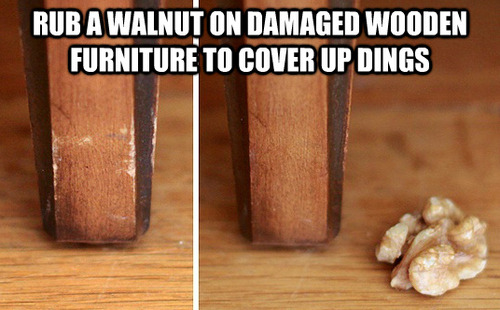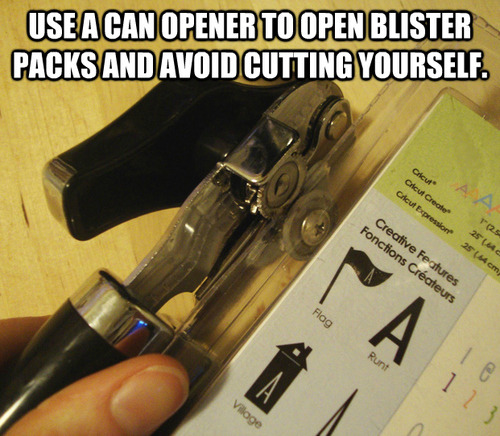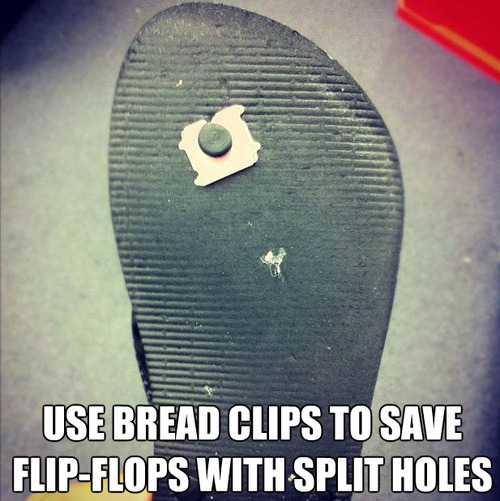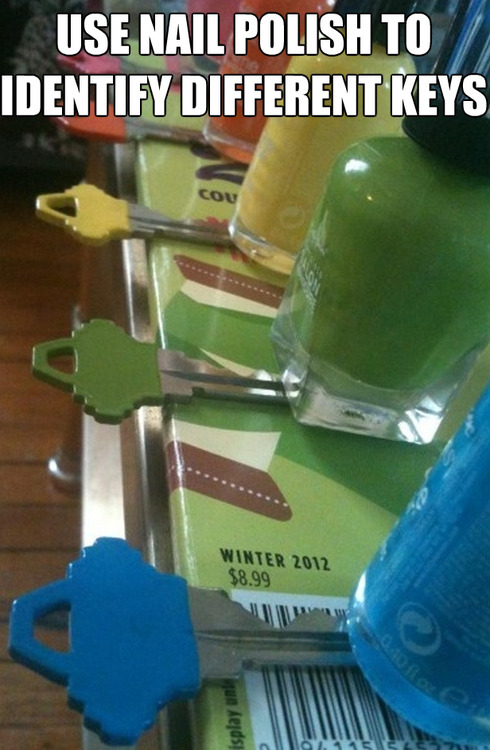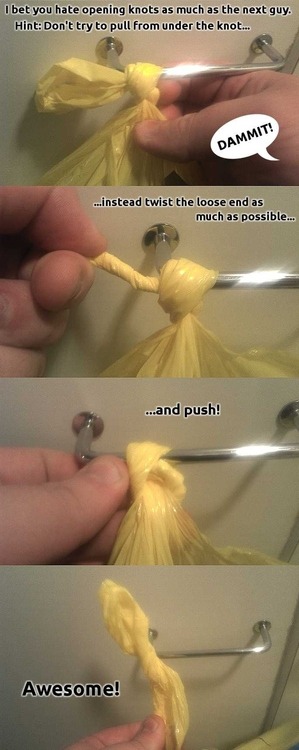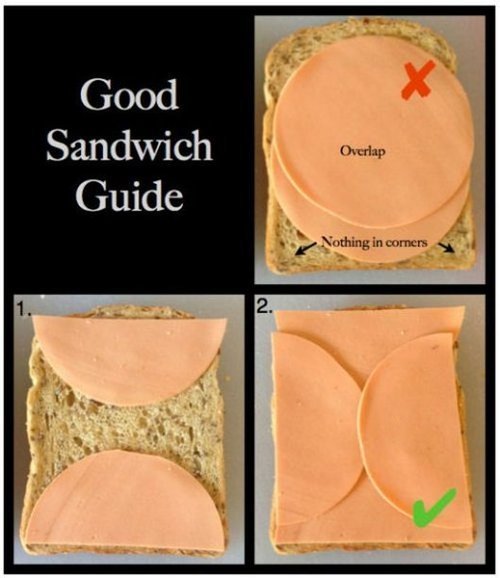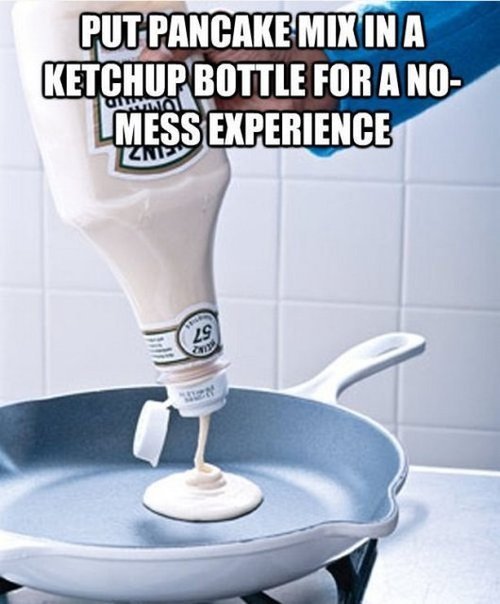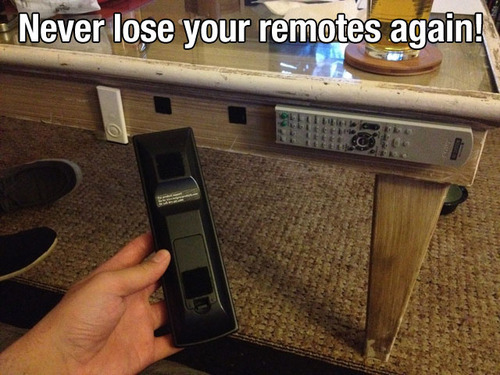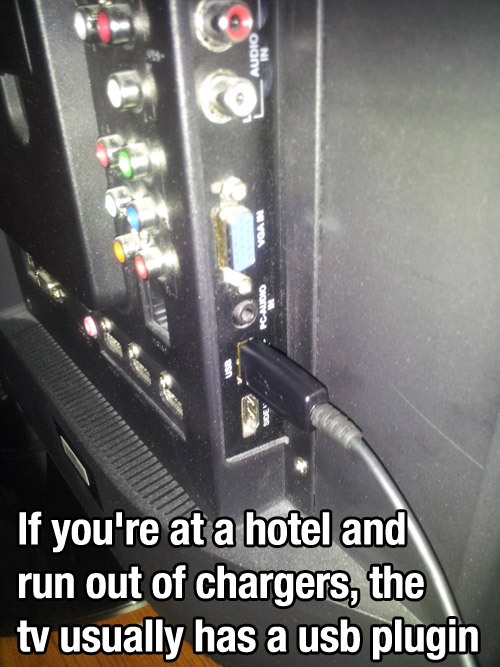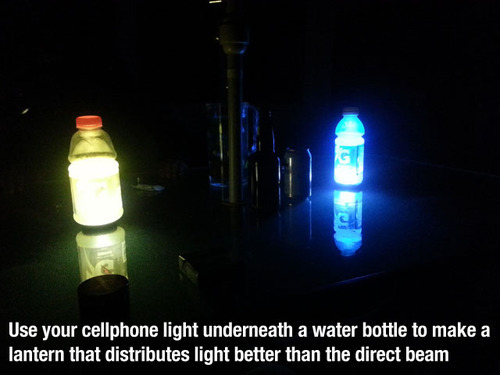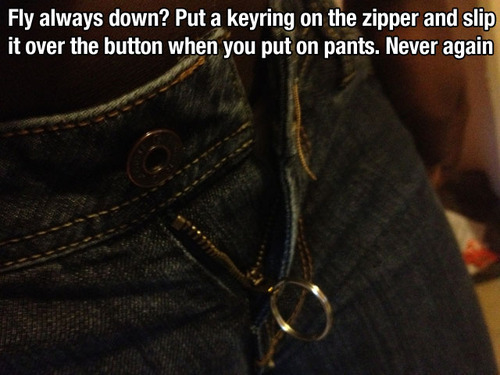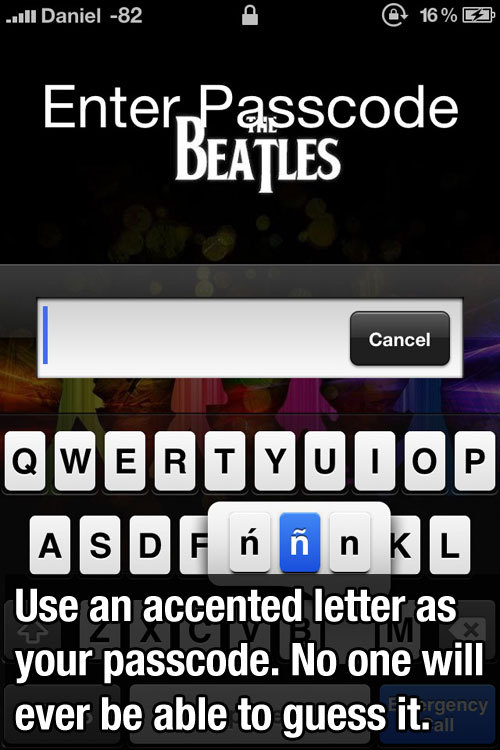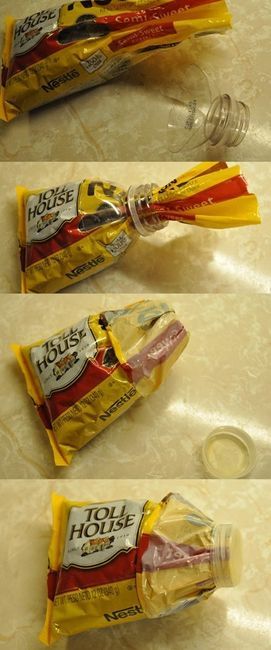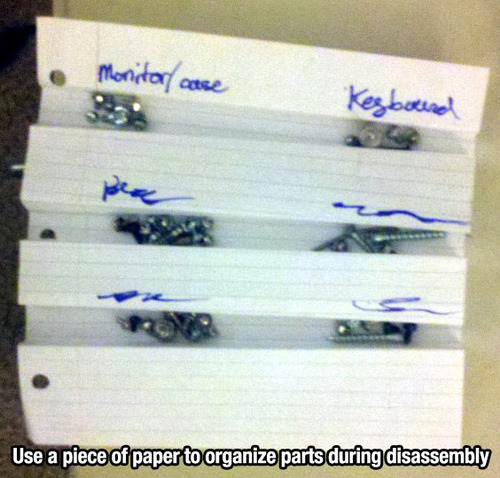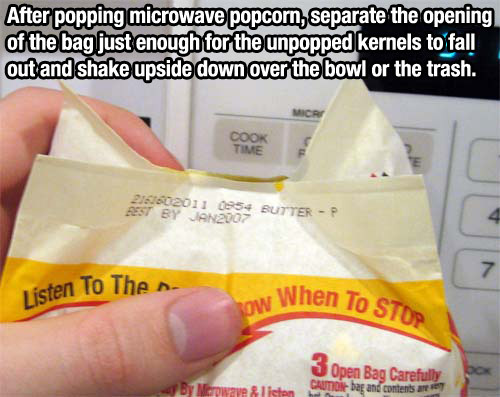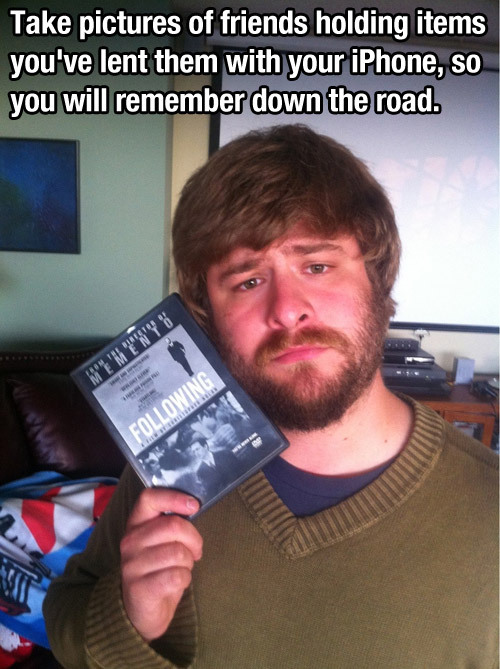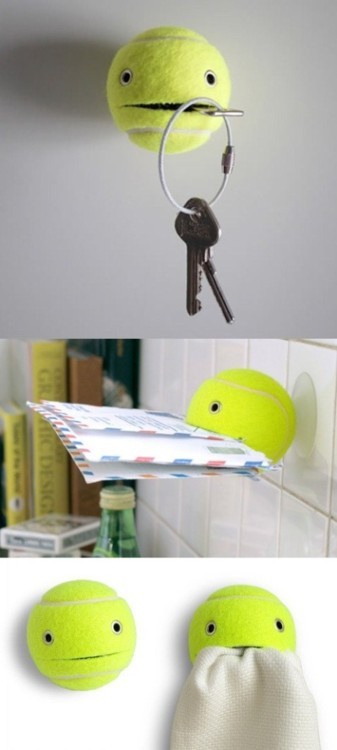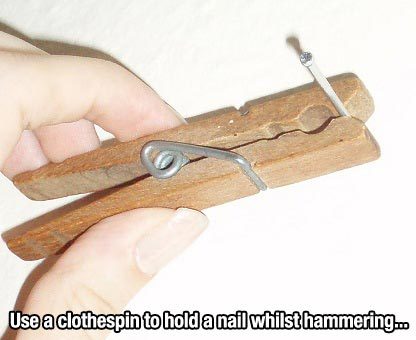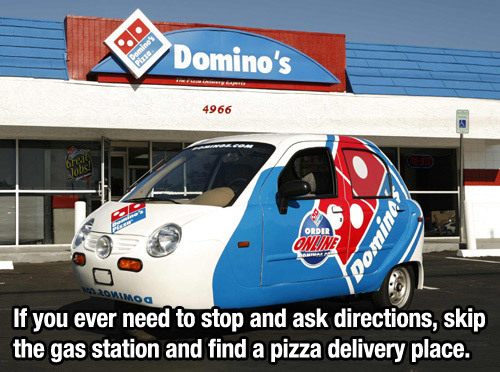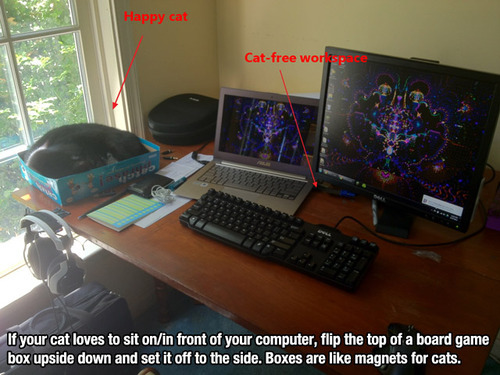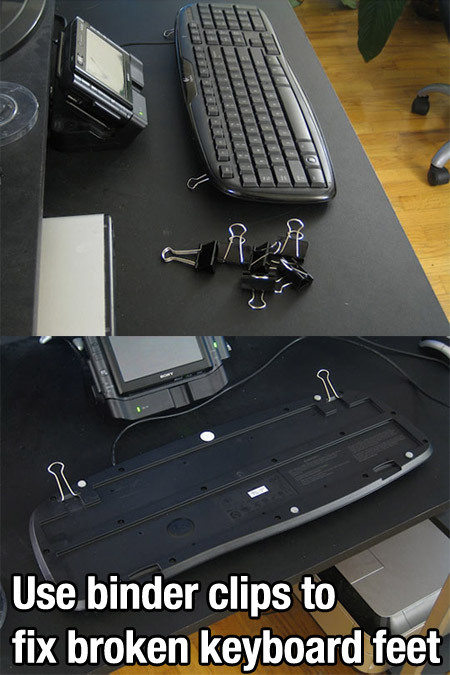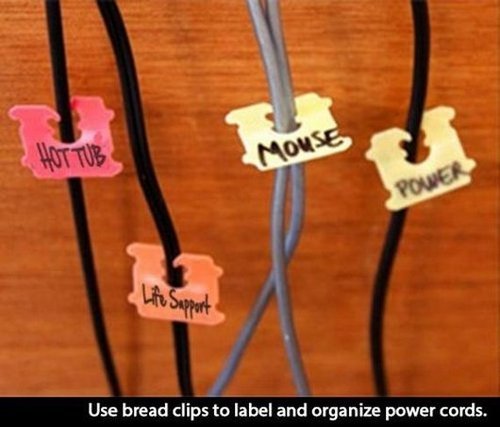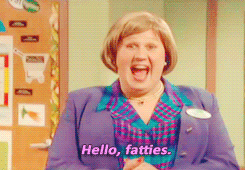Shared posts
99 Life Hacks to make your life easier!
brunobeloMuita coisa útil!
Brazilian banks: No more free lunch

ON OCTOBER 10th Brazil’s Central Bank cut its policy interest rate for the tenth time in just over a year, to 7.25%. The move surprised analysts, since rates were already historically low and inflation above the centre of the monetary-policy committee’s 2.5-6.5% target. Neither economic growth, likely to finish the year at an anaemic 1.5%, nor the currency, which tends to rise with rates as return-seeking foreign investors pile in, are supposed to play a part in its deliberations. But most analysts now believe that its decisions are taken with an eye to boosting growth and weakening the currency, and that unless inflation threatens to break the 6.5% barrier, rates will stay low for some time.
For now, subdued global demand means that inflation is unlikely to slip its leash. But in the longer term the government will have to rein in public spending and push through difficult reforms if it wants Brazil to grow faster than 3-4% a year without fuelling inflation. Recent moves to cut payroll taxes, limit public-sector pay rises, reduce energy costs and improve a woeful transport infrastructure should help to raise this distinctly modest economic speed limit. They have also convinced many that the president, Dilma Rousseff, will do whatever it takes to save the bank from having to hike again.
Permanently lower interest rates would be the most positive economic development in Brazil since hyperinflation was vanquished almost 20 years ago, says Enestor dos Santos of BBVA, a Spanish bank active in the region. Firms would invest more—and making a decent return would mean funding productive projects, not just parking cash in government bonds.
Returns to lender
But some industries will see profits fall. When investors realised that electricity firms would have to accept much lower returns from early next year, or else be ineligible to rebid for concessions that run out between 2015 and 2017, share prices slumped. Masha Gordon of PIMCO, a fund manager, praises the government for blocking its ears to vested interests and calling time on Brazil’s “free lunch”. Toll-road and energy concessionaires who signed deals when rates were much higher benefited hugely as they fell, she points out, leaving some low-risk projects earning real returns approaching 20%. That could hardly be expected to last.

But it is banks that will have to do most to adapt to Brazil’s new low-interest environment, says Ms Gordon. Their net interest margins have been falling for years as the rates they charge on loans fall in line with the policy rate, and the room to cut the rates they offer on deposits reduces. That has eaten into returns (see chart). The pressure on profits has built recently as the government has pushed banks to pass on lower rates to customers, faster.
The two big state-controlled banks, Caixa Econômica Federal and Banco do Brasil, have slashed rates at the government’s behest. Private banks have had to follow suit or lose market share. According to Anefac, an accountants’ trade body, the average rate paid by Brazilian retail borrowers in September fell below 100% for the first time. Rates for business loans are also at an all-time low—48% a year.
By Brazilian standards such rates may be low; by international ones, they are eye-watering. The biggest reason, says Sergio Furio of bankFacil, a start-up that offers consumer-finance information online, is the inefficiency of Brazilian banks. Although their revenues per employee are broadly in line with other large economies, their low productivity is masked by very high prices. They need twice as many staff to generate the same volumes as banks in Europe or America, he points out—but are still profitable because margins are two or three times as high, too.
“Brazilian banks have been relying on the last gasp of outrageous interest rates,” says Mr Furio. Instead they should be trying to become more efficient and to attract a better class of customer. High-cost loans put off numerate, well-heeled types who could be relied on to repay them. That adverse selection means rates must be pushed up even higher to cover frequent defaults. BankFacil hopes to make money by breaking this cycle, referring newly educated, creditworthy users to financial institutions which can then charge them less.
The highest interest rates of all are on credit cards, which in Brazil are mostly used to buy goods in “interest-free” instalments. Retailers offer self-financed payment plans over up to 18 months. They hide their own financing costs inside the sticker price and only request payment from the customer’s card issuer month by month. Banks make little money from this peculiar “credit on credit”, which makes up 70% of total credit-card loans in Brazil. Only when a cardholder misses a payment does the card issuer finally get to charge interest. But the chance of default among such late payers is a hefty 28%, meaning rates must be astronomical if banks are to make a profit at all.
Last month Itaú Unibanco, Brazil’s largest privately controlled bank, let it be known that it would like to put an end to credit cards being used this way. But the government worries that Brazilian consumers are so used to paying for everything from clothes to white goods to cars in supposedly interest-free instalments that they might then stop spending altogether, nipping a nascent recovery in the bud. Any move will have to be gradual.
The good news is that Brazilian banks have lots of fat to cut before they reach the bone. They have also acquired plenty of new customers during the past decade, says Franklin Santarelli of Fitch Ratings, an expensive process that should reap rewards during the next one. Brazil is “just moving into the mainstream,” says Ceres Lisboa of Moody’s, another ratings agency. Its banks, like those elsewhere, have to work out how to make money with lower margins and higher volumes.
Nihilistic becomes nStigate, steps away from retail game development
brunobeloQue legal isso. Nintendo e Sony que não se cuidem...
 Black Ops: Declassified and Resistance: Burning Skies developer Nihilistic Software is reorganizing and reforming, with a focus on moving from retail game development towards downloadable, online, and mobile markets. The California-based company today announced it's renaming itself as nStigate following a reorganization that won't see any "planned layoffs," but will see its staff base shrink across the coming months.
Black Ops: Declassified and Resistance: Burning Skies developer Nihilistic Software is reorganizing and reforming, with a focus on moving from retail game development towards downloadable, online, and mobile markets. The California-based company today announced it's renaming itself as nStigate following a reorganization that won't see any "planned layoffs," but will see its staff base shrink across the coming months.Founded in 1998, Nihilistic debuted two years later with the macabre RPG Vampire: The Masquerade. The studio more recently came into prominence on PlayStation Vita, releasing Burning Skies and being hired by Activision to develop Call of Duty for Sony's new handheld. Black Ops: Declassified releases next month and Nihilistic assured gamers on Twitter the coming transition won't affect any current projects.
[Thanks, Ethan]
 Nihilistic becomes nStigate, steps away from retail game development originally appeared on Joystiq on Thu, 18 Oct 2012 04:55:00 EST. Please see our terms for use of feeds.
Nihilistic becomes nStigate, steps away from retail game development originally appeared on Joystiq on Thu, 18 Oct 2012 04:55:00 EST. Please see our terms for use of feeds.
A pior cena de atropelamento de todos os tempos
Meu Deus! Quanta violência! Será que ele morreu?
Friends, I am Disappoint

Submitted by: Unknown
Tagged: brilliant status , category:Image , friends , i am disappoint , three likes Share on FacebookThe Love That Could Never Be

Submitted by: Unknown
Tagged: boo , first date , never could be , scared , shy guy Share on FacebookBroken Ticket Dispenser? Too Bad!
 Service must never stop!
Service must never stop!
Submitted by: rdquintas
Tagged: portuguese , ticket , ticket dispenser , ticket roll Share on FacebookThe Best Undiscovered Beat-Em-Ups
brunobeloTem muita coisa boa nesse link.

Presented by Gamerforlife
See the rest of our Hidden Gems Series
The beat ‘em up genre flourished during the late eighties and into the nineties. In addition to seeing a constant flow of quarters in the arcades, they would also develop a strong presence on consoles with popular titles like Streets of Rage 2. The genre also helped big companies like Capcom and Konami further establish themselves with a number of classic and lucrative arcade games from both companies. Eventually, the genre would be overshadowed by 2D fighters with the coming of Street Figher II. Fighting games owe a lot to the beat ‘em up genre however, and many people often confuse the two genres since they share a lot of elements.
This article attempts to shine a light on as many quality, 2D beat ‘em ups as possible with an emphasis on lesser known games. This is why you won’t see well known titles like Double Dragon, River City Ransom, Streets of Rage 2, Final Fight, Konami’s more popular beat ‘em ups, Guardian Heroes, Comix Zone, etc. featured here (though an obscure entry from a popular series may still pop up on the list). Some may debate the obscurity of certain titles on this list.
Remember that what may not seem obscure to a beat ‘em up fan may not be well known by a more casual fan who is only just discovering classic, 2D beat ‘em ups and didn’t grow up on them. Ultimately, this article is just about exposing people to lots of great or interesting games within the genre. Perhaps even knowledgeable beat ‘em up fans will find something interesting here that they had not known about before. The reason this article doesn’t feature any 3D beat ‘em ups is because there are already so many 2D ones that they need their own article.
Since this genre flourished on consoles and arcade machines, that makes up the bulk of the article (although, we have moved some of the lesser titles to an honorable mentions list and included the console versions in the console section below it). However, in the interest of exposing people to as many interesting games as possible, there are a small number of PC and Doujin games featured in this article as well. It should be noted though, that PC games aren’t exactly the focus of this site. One last note, I don’t often distinguish between beat ‘em ups and hack and slash games here. They’re mostly the same thing in my eyes. Enjoy the article and let us know in the comments section if you feel there are any other great games missing from this list. It’s very hard to cover every notable game in such a large genre.
Arcade Hidden Gems
Denjin Makai series
Winky Soft (1993 – 1995)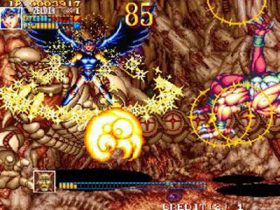 The Denjin Makai series features one of the largest movesets of the genre. You can play through the games without even using every move at your disposal. The games also feature great combo systems. You can find Youtube videos of combos in Denjin Makai II going up to triple digits!
The Denjin Makai series features one of the largest movesets of the genre. You can play through the games without even using every move at your disposal. The games also feature great combo systems. You can find Youtube videos of combos in Denjin Makai II going up to triple digits!
Another distinguishing feature is a power bar that you can manually ch
arge up to perform special attacks. Finding a chance to charge it in combat is part of the strategy.
The first game received a Super Famicom port with a few changes known as Ghost Chaser Densei. The series really peaked with Denjin Makaii II (Guardians) however, which was never ported. It features eight playable characters with tons and tons of moves at their disposal.
There is quite a bit of humor in this game. One boss flexes for his fans and has a camera man filming his fight with you. Prior to this fight, you’ll also see a guy flip out after you burst into the room and destroy a house of cards he was building! It’s a great series for anyone looking for games with extremely large movesets and combo possibilities.
Golden Axe Revenge of Death Adder
Sega AM1 (1992) Many people are familiar with the trilogy of Golden Axe games on the Genesis and the various re-releases of the original Golden Axe. However, this little known gem is the best game in the series. The game runs on System 32 hardware and features large sprites, detailed graphics, scaling effects, and impressive animations.
Many people are familiar with the trilogy of Golden Axe games on the Genesis and the various re-releases of the original Golden Axe. However, this little known gem is the best game in the series. The game runs on System 32 hardware and features large sprites, detailed graphics, scaling effects, and impressive animations.
Of note is that some spells show you a close-up of your foes being decimated. You can take multiple paths through the game, ride a larger number of creatures than Golden Axe, save prisoners, and use catapults and ballistae against your enemies.
You can also mount these on your creatures. Also, Gilius Thunderhead now rides atop a giant. To quote something a random youtube user once said about this game, “Is there anything more badass than a dwarf riding on the back of a giant, who is himself riding a giant fire-breathing praying mantis?”
The soundtrack is pretty good with lots of pounding drums and that epic feel that you’d expect from what is basically gaming’s version of Conan. There are still lots of great voice samples too like the classic, “Oh gaaaawd!!!” and various voice samples from enemies, NPCs, and the prisoners that you rescue. It all makes the game feel much more alive. Overall, it’s a bigger, badder version of Golden Axe that every beat ‘em up fan should try.
Battle Circuit
Capcom (1997) Capcom has a lot of great and well known arcade beat ‘em ups. This is possibly their most obscure one however. It’s a rare game only released in Japan and parts of Europe and it has no console ports. Battle Circuit has the distinction of being Capcom’s last arcade beat ‘em up. It’s also one of their funniest and most bizarre beat ‘em ups. It has a pulp, ’50 science fiction inspired, feel that is often compared to Capcom’s Captain Commando and features some bizarre characters to play as.
Capcom has a lot of great and well known arcade beat ‘em ups. This is possibly their most obscure one however. It’s a rare game only released in Japan and parts of Europe and it has no console ports. Battle Circuit has the distinction of being Capcom’s last arcade beat ‘em up. It’s also one of their funniest and most bizarre beat ‘em ups. It has a pulp, ’50 science fiction inspired, feel that is often compared to Capcom’s Captain Commando and features some bizarre characters to play as.
You have a walking plant, a kid named Pola Abdul (sounds a lot like a certain, former American Idol judge) riding an ostrich, and a character that looks a lot like Felicia from Darkstalkers, just to name three of them. The enemies are even crazier and you can tell that Capcom was having fun putting this game together. You’ve got topless, biker women, a boss that looks like Elvis, a villain with a head that looks like a certain planet (his name is Dr. Saturn), and a giant space baboon!
The gameplay has some interesting elements like the ability to purchase extra moves, health upgrades, and move upgrades after each stage. This gives a certain strategic element to the game. The game also features tag team attacks if two players perform a special move at the same time. You also can activate special abilities by pressing both of your action buttons in mid-air. These will power you up in various ways like making you faster or increasing your damage output. Lastly, you will need 3200000 points to be given the option of facing the game’s true final boss. Defeating him will make him appear on your high score screen.
Battle Circuit is certainly one of the most interesting entries in Capcom’s long line of quality beat ‘em ups and a nice way to end their run of arcade, beat ‘em up classics.
Oriental Legends 2
International Games System (2007) IGS has been keeping old school, 2D Arcade beat ‘em ups alive in the past few years. Yes, apparently someone is still making arcade beat ‘em ups these days as this game came out in 2007. This game features RPG elements similar to something like Dungeons & Dragons Shadow over Mystara.
IGS has been keeping old school, 2D Arcade beat ‘em ups alive in the past few years. Yes, apparently someone is still making arcade beat ‘em ups these days as this game came out in 2007. This game features RPG elements similar to something like Dungeons & Dragons Shadow over Mystara.
An interesting tidbit about this game is that there are cards that save your levels when you put them into the machine. There’s a total of 10 characters and two difficulty settings that actually change up the levels a bit. They are also multiple paths through the game.
There are some interesting items you can use in the game, different weapons, cool magic spells and special moves. It has a nice combo system too as I’ve seen a player pull off one with 621 hits. You’ll get a kick out of Oriental Legends 2 this if you enjoyed Capcom’s D&D beat ‘em ups.
Aliens vs. Predator
Capcom (1994) Here’s another great licensed game from Capcom. This one actually plays a bit differently from their other games. You have projectiles always available to you, but have to worry about reloading your gun or having your weapon overheat. Of course, you can always fall back on good old fashioned melee combat when this happens.
Here’s another great licensed game from Capcom. This one actually plays a bit differently from their other games. You have projectiles always available to you, but have to worry about reloading your gun or having your weapon overheat. Of course, you can always fall back on good old fashioned melee combat when this happens.
The controls for your characters are a bit different from Capcom’s other beat ‘em up games (there’s even a charge move like Guile’s Sonic Booms from Street Fighter II). It gives the game a unique feel. This game also throws a LOT of enemies at you and gets really hectic at times. In fact, this is easily one of the most fast-paced, intense and adrenaline pumping games in Capcom’s entire catalogue of arcade beat’em ups.
There is great variety to how the different characters play. Speaking of which, this game introduces Lieutenant Linn Kurosawa. She would later cameo in other Capcom games and there is a playable character in Capcom’s Cannon Spike who resembles her. You’ll find lots of ways to combo and juggle enemies in this game if you’re a skilled player.
It’s impressive to see how amazing everything looks in this game with its incredible graphics and tons of action and enemies on the screen with a smooth frame rate. The soundtrack is pretty epic too, like the whole game in general.
Dungeons & Dragons: Shadow Over Mystara (1996)
 This is actually a follow up to Dungeons & Dragons: Tower of Doom. Both are excellent beat ‘em ups featuring lots of RPG elements. In fact, Shadow over Mystara is really a culmination of all of Capcom’s previous attempts at incorporating RPG elements into the beat ‘em up genre with games like The King of Dragons and Knights of the Round. This game features tons of spells with varying effects like damage, healing and status buffs. There’s even an all powerful one known as Final Strike that requires you find a special staff, hit a certain number of experience points, and have a party of at least three players.
This is actually a follow up to Dungeons & Dragons: Tower of Doom. Both are excellent beat ‘em ups featuring lots of RPG elements. In fact, Shadow over Mystara is really a culmination of all of Capcom’s previous attempts at incorporating RPG elements into the beat ‘em up genre with games like The King of Dragons and Knights of the Round. This game features tons of spells with varying effects like damage, healing and status buffs. There’s even an all powerful one known as Final Strike that requires you find a special staff, hit a certain number of experience points, and have a party of at least three players.
Like a true RPG, you’ll find that some enemies are weak to certain spells. There’s even a shop to buy items and different weapons for you to equip, each with different properties. You have a personal inventory you can access while playing to use your items or cast spells.
The combat is great, with lots of combo possibilities, blocks, counters, and OTG attacks. Much like Aliens vs. Predator, the combos that can be pulled off in this game by skilled players are very, very impressive. There are youtube videos of this game just focusing on combo exhibitions. The game also has branching paths throughout the game to encourage you to play it more than once. Some people argue over whether this or the next entry in this list is the pinnacle of Capcom’s arcade beat ‘em ups. Frankly though, it’s difficult to pick the best game when Capcom’s arcade beat ‘em ups in general were all of such high quality.
Knights of Valour series
IGS (1999 – 2011) The Knights of Valour series is something for you fans of Dynasty Warriors or Capcom’s Warriors of Fate. It’s another series set in the Romance of the Three Kingdoms time period and features more quality beat ‘em up action from IGS.
The Knights of Valour series is something for you fans of Dynasty Warriors or Capcom’s Warriors of Fate. It’s another series set in the Romance of the Three Kingdoms time period and features more quality beat ‘em up action from IGS.
This actually seems to be their main series as it has more iterations than the Oriental Legends games. There are lots of secrets, items, specials, and hidden stuff to be found in this series.
One level in Knights of Valor 2 Plus features an escort mission, an odd thing to see in an arcade beat ‘em up. Knights of Valour 3 runs on the PGM2 hardware and features a shop screen, 10 characters, different paths, widescreen, a boss rush mode, level selection and gameplay that moves at a fast pace. It’s your go-to game for dishing out some pain as a legendary, Chinese, historical badass.
Battletoads/Super Battletoads
Rare (1994) This game is being featured because many people are not even aware that a Battletoads arcade game existed. You’ve all heard of the NES classic, some of you may also know of the SNES sequel known as Battletoads in Battlemaniacs and the Double Dragon crossover game. This tops them all however.
This game is being featured because many people are not even aware that a Battletoads arcade game existed. You’ve all heard of the NES classic, some of you may also know of the SNES sequel known as Battletoads in Battlemaniacs and the Double Dragon crossover game. This tops them all however.
Owing to its console roots, there is a greater variety of gameplay ideas here than most beat ‘em up arcade games. One level features slippery, ice on the ground like a platform game and another one has you shooting enemies like a Contra game.
The bosses feel more like console game bosses than the usual big guy with lackeys featured in most arcade beat ‘em ups. In spite of all this, there is a greater emphasis on beat’em up gameplay here than in the console games. You’ll find the usual, over the top attacks the series is known for, including one that is, quite literally, a ball breaker. All of this contributes to making this a more varied and interesting arcade beat ‘em up than you’ll typically find.
It goes without saying that this game looks MUCH better than any of the console Battletoads games. There are enemy characters who are much bigger than other Battletoads games. You can kick enemies towards the screen in a similar way to how you throw enemies in Teenage Mutant Ninja Turtles: Turtles in Time. The cartoonish quality of the series comes out here better than ever! The soundtrack is excellent. The first stage music will get a player amped up to keep playing and is one of the best tracks you’ll hear in a beat ‘em up.
Vendetta/Crime Fighters 2
Konami (1991) Crime Fighters 2 is a game that places a heavy emphasis on weapons. There are tons of them everywhere and the game clearly wants you to use them. Also notable is the game’s goofy, over the top style.
Crime Fighters 2 is a game that places a heavy emphasis on weapons. There are tons of them everywhere and the game clearly wants you to use them. Also notable is the game’s goofy, over the top style.
There’s a lot of funny, slapstick comedy and hilarious moments like when you knock someone over a bridge and watch them hang there waiting for you to knock them off or when you destroy a platform and send the enemies on it to the ground.
Adding to the game’s humor is the look of the main characters. Some players have noted that two of them look like Mr. T and Hulk Hogan! Some of the game’s humor was considered a bit too much apparently. The versions of the game released outside of Japan removed a character who actually dry humps and licks the players!
The combat features some cool things like the ability to grab and hold an enemy while another player pummels him! It’ll take some players a while to get used to the lack of a jump function in this game however.
Shadow Force
Technos (1992) You may know Technos for Double Dragon and River City Ransom, but this little gem was also developed by them. What’s interesting about this game is that it controls a bit like a fighter.
You may know Technos for Double Dragon and River City Ransom, but this little gem was also developed by them. What’s interesting about this game is that it controls a bit like a fighter.
This game has a total of six buttons, as many as a typical fighting game. This allows for a lot of moves and the game even has low attacks (performing by holding down and an attack button), also like a fighting game. You also block by holding back on the joystick. You also have about two special attacks per character. The most interesting part of the game is that you can possess enemy characters and use their moves. That’s a pretty unique feature for a beat ‘em up.
For some odd reason, there are also one on one fights after each stage where you control an enemy character. If you’re playing with a friend, you’ll have to fight each other. The American version of this game is not recommended as some features of the game were changed. The Japanese version gives you the full experience.
Asterix
Konami (1992) Asterix is a comic book character that is well known to people in France. He was a perfect fit for Konami since they had so much success using licensed characters for their arcade beat ‘em ups in the ’90s. This is one of Konami’s lesser known beat ‘em ups, but it’s every bit as good as their more popular ones, if not better.
Asterix is a comic book character that is well known to people in France. He was a perfect fit for Konami since they had so much success using licensed characters for their arcade beat ‘em ups in the ’90s. This is one of Konami’s lesser known beat ‘em ups, but it’s every bit as good as their more popular ones, if not better.
Though it only allows for two players, unlike most of their other beat ‘em ups, it does feature some gameplay elements you won’t find in those games. You can actually pick up enemies after you knock them down and perform different throws on them. You also have an attack that can be charged up to unleash a powerful uppercut that will knock your enemies upward Mortal Kombat style.
Unlike other Konami beat ‘em ups, you can attack your friend, which can be fun to do if you’re so inclined. The game features some rather interesting stages that go a bit beyond standard beat ‘em up gameplay. One has you riding in mine carts while avoiding obstacles. Another has you leaping across gaps and dodging boulders like a good platform game. Yet another one has you in a boat fighting off sharks and pirates. There are interesting challenges between levels (like chariot races) where you must compete against a friend as well.
The game looks as good as you’d expect given the high quality of all Konami arcade beat ‘em ups of the time. All of the characters are instantly recognizable to fans of the comic and the game is bright and cartoony like Konami’s other titles. The game also features many great references to the source material with levels based on different books and recognizable characters as bosses. It’s all very authentic and shows the kind of care Konami often took with licensed games during this time period.
Given the nature of the license and the light-hearted nature of Konami arcade games in general, there is a lot of humor to be found in this game. It’s hard not to laugh when seeing a character grab an enemy and slam him back and forth into the ground with one arm or just grab him and slap him repeatedly in the face! Actually, there are so many humorous touches owing to the comic book in this game that it may be the funniest of all of Konami’s arcade brawlers. Asterix fans will love this game
Bucky O’Hare
Konami (1992) This is one of Konami’s lesser known licensed games, much like Asterix. Bucky O’Hare featured in some comic books and an animated TV series. This is one of Konami’s more interesting beat ‘em ups because you always shoot your enemies. This might make it sound more like a run and gun game. However, it still plays largely like Konami’s other beat ‘em ups.
This is one of Konami’s lesser known licensed games, much like Asterix. Bucky O’Hare featured in some comic books and an animated TV series. This is one of Konami’s more interesting beat ‘em ups because you always shoot your enemies. This might make it sound more like a run and gun game. However, it still plays largely like Konami’s other beat ‘em ups.
Though weapon power ups and screen clearing bombs do certainly feel like elements borrowed from the run and gun genre. Other odd bits include the ability to slow your descent after a jump and special attacks that don’t use up your health at all. There is also a shooter level and one where you can fly
As is typical with Konami beat ‘em ups, the game is bright and colorful and the characters look just like their TV show counterparts. There are cutscenes between levels that feature a lot of voice work from the actual actors from the show. If you were a fan, that should bring a smile to your face. Overall, this is yet another great arcade game from Konami. The mix of beat ‘em up and run and gun gameplay makes its stand out a bit more than their other titles.
Armored Warriors/Powered Gear
Capcom (1994) This is one of the more unusual entries in Capcom’s beat ‘em up catalogue. You play as a mech, similar to the ones in Captain Commando. They can move around the screen pretty fast, making this one of Capcom’s faster paced games.
This is one of the more unusual entries in Capcom’s beat ‘em up catalogue. You play as a mech, similar to the ones in Captain Commando. They can move around the screen pretty fast, making this one of Capcom’s faster paced games.
Imagine a game where you’re essentially ALWAYS dashing. The coolest thing about this game is how you replaces parts of your mech with various parts you can get from defeated enemies. These parts can drastically affect how your mech fights and gives the game a really nice strategic element.
There are some interesting part combinations you can have too. It feels sort of like a Mega Man X game, if Mega Man X was a fast paced, beat ‘em up. Also, three players can merge their mechs together to form a more powerful mech.
This game actually inspired a one on one fighter for the arcade called Cyberbots (also ported to the Sega Saturn and Playstation).
The Combatribes
Technos (1990) The makers of influential games like Double Dragon, Renegade and River City Ransom also created this cool, little game.
The makers of influential games like Double Dragon, Renegade and River City Ransom also created this cool, little game.
The game has some fun moves like bashing two people’s heads together or swinging someone around and around before throwing him. This will knock down other enemies, kind of like the slam move in Teenage Mutant Ninja Turtles: Turtles in Time. You can also kick downed enemies in the gut or bash their head into the ground. There are items you can use against enemies. The coolest one is the pinball machine! You can even toss a motorcycle at someone!
This is one of the few beat ‘em ups to not have a jump. That will feel strange to some people. Another odd quirk of the game is that boss battles continue even after you beat the boss if there are still enemies around.
This game was ported to the Super Nintendo, but a couple of things were change and removed unfortunately.
Shop for The Combatribes on eBay
Shop for The Combatribes on Amazon.com
Michael Jackson’s Moonwalker
Sega/Triumph International (1990) A lot of people are familiar with Moonwalker on the Sega Genesis. There was an arcade game released as well. You’ll be saving kids throughout the game just like in the Genesis version. What’s interesting is the isometric viewpoint, which is seldom seen in the genre and gives the game a different feel.
A lot of people are familiar with Moonwalker on the Sega Genesis. There was an arcade game released as well. You’ll be saving kids throughout the game just like in the Genesis version. What’s interesting is the isometric viewpoint, which is seldom seen in the genre and gives the game a different feel.
Like the Genesis version, Michael can defeat enemies by getting them to perform in a dance number with him. That has to be the coolest thing about BOTH games. He can also turn into a robot and fire lasers and missiles at enemies if he finds Bubbles the chimp.
By default, Michael attacks with some kind of energy he emits from his hands rather than using melee attacks. You can hold the button down to charge it up to five levels, increasing its power and range. There are some cool comic book style panels before each stage fleshing out the story. It’s a simple, but fun game. The dance numbers, isometric view, and robot power-up help to give it some unique flavor and you can enjoy listening to some of Michael’s biggest hits as you play through each stage.
Sonic Blast Man
Taito (1990) This is a very odd game. It features a super hero who basically goes around super punching the crap out of everything. The intro shows him saving a woman tied to some train tracks by hitting a moving train with a 100 megaton punch! This is a common theme throughout the game. Super punch a punk, purse thief! Super punch a truck before it hits a baby carriage! Super punch a building to take out the armed bad guys on top of it! Super punch a giant, crab robot! Super punch a giant asteroid!
This is a very odd game. It features a super hero who basically goes around super punching the crap out of everything. The intro shows him saving a woman tied to some train tracks by hitting a moving train with a 100 megaton punch! This is a common theme throughout the game. Super punch a punk, purse thief! Super punch a truck before it hits a baby carriage! Super punch a building to take out the armed bad guys on top of it! Super punch a giant, crab robot! Super punch a giant asteroid!
At no point does the game make you question the collateral damage you’re doing as you destroy occupied trains and buildings with your super punch. Who cares, right? It’s a video game!
The special thing about this game is how you actually play it. The game features a special glove that you have to put on. You use this to hit a sensor to knock out whatever crazy thing the game throws at you. This game has the most unique controls of any other title on this list. There is also a Super Nintendo game that is a little less interesting, as it plays like a normal side-scrolling beat ‘em up.
Both the arcade game and the SNES game got sequels. One interesting bit of trivia surrounding Sonic Blast Man is how the original arcade game was recalled after supposedly causing injuries to players. I guess only real super heroes can punch out trains and buildings.
Captain Commando
Capcom (1991) Hardcore Capcoms fans know that Captain Commando’s history goes all the way back to the NES, when he was a Capcom mascot. Modern gamers will recognize him from the Marvel vs. Capcom games where he can be seen beating the crap out of Mega Man for stealing his job as Capcom mascot!
Hardcore Capcoms fans know that Captain Commando’s history goes all the way back to the NES, when he was a Capcom mascot. Modern gamers will recognize him from the Marvel vs. Capcom games where he can be seen beating the crap out of Mega Man for stealing his job as Capcom mascot!
This game is fun for a couple of reasons. First of all, it has this sort of old, classic Sci Fi feel to its world and characters. It’s a bit similar to Capcom’s Battle Circuit in that way. Also, the playable characters are awesome. You have a ninja, a baby riding a robot (I’m not making that up), and a badass, mummy, alien guy.
You can also play as Captain Commando of course. What’s really cool about the gameplay is that you can ride mechs. Plus, the game had support for four players. The game was ported to the Super Nintendo. The port is a good game in its own right, but loses some of what made the arcade games stand out. For example, you can’t ride cool mechs in it.
Arabian Fight
Sega-AM2 (1992) Not to be confused with Arabian Magic by Taito, Arabian Fight is one of Sega’s lesser known arcade games and one of the few beat ‘em ups featuring an Arabian theme. In terms of gameplay, Arabian Fight may be one of the weaker entries on this list. It’s certainly playable, but a bit awkward at first.
Not to be confused with Arabian Magic by Taito, Arabian Fight is one of Sega’s lesser known arcade games and one of the few beat ‘em ups featuring an Arabian theme. In terms of gameplay, Arabian Fight may be one of the weaker entries on this list. It’s certainly playable, but a bit awkward at first.
The game has weird hit detection and can be rather confusing to play with more than one player onscreen. On gameplay alone, it would be easy to write off this game. However, it’s the visuals more than anything that you will take away from this game.
Arabian Fight pulls off some interesting visual tricks that are rather unconventional for a beat ‘em up. Characters appear in the foreground of the screen before jumping onto the actual field of play. Your character will also jump into the foreground of the screen for a fully animated close up when performing magic attacks. It looks extremely cool. The only other beat ‘em up game I know of to do that visual trick is a Sailor Moon arcade game (which just happens to be published by Sega). This predates that game by three years. You can also throw enemies towards the screen.
The game loves to really put things right in your face as boss deaths are done with closeups and your character will be knocked forward into the screen when he or she runs out of lives. This is all done with animated graphics giving these moments a cartoon-like feel reminiscent of something like Dragon’s Lair. You’ll also see characters get larger or smaller as they move towards or away from the screen. There are lot of things going on in this game’s visual department. You have sprite scaling, parallax effects, and animation all working together to give the game a somewhat 3D look. This was an ambitious effort from Sega.
Suffice it to say, this game has an unusual look to it that has to be seen to be really understood. Try to find a video on youtube and see how unconventional this game was for its time. The game certainly has one of the most unique visual presentations you’ll see in the genre. The gameplay is a bit awkward, but a skilled player can still blow through this on one life after adjusting to it. It’s a ride worth taking for the sights alone and to take in the seldom used Arabian theme.
Metamorphic Force
Konami (1993) Now here’s one of the few Konami beat ‘em ups to feature an original IP. The idea is similar to Altered Beast. You play as a couple of characters who can morph into a powerful animal form for a limited time. An odd feature of this game is that your health is always depleting and you’ll see the funny message, “Dead Soon!” when it gets too low. Otherwise, the game plays similar to other Konami beat ‘em ups.
Now here’s one of the few Konami beat ‘em ups to feature an original IP. The idea is similar to Altered Beast. You play as a couple of characters who can morph into a powerful animal form for a limited time. An odd feature of this game is that your health is always depleting and you’ll see the funny message, “Dead Soon!” when it gets too low. Otherwise, the game plays similar to other Konami beat ‘em ups.
Combos flow well in this game, and you can also attack downed enemies. It’s actually quite fun to see two players stomp the living crap out of a boss! The game looks and sounds great. The beast transformations look cool as your character yells, “Beast!”and the powered up beast attacks look great as well. There’s not much else to say as the game exudes the level of quality that was typical of so many Konami beat ‘em ups back then.
Night Slashers
Data East (1993) If you’re looking for a beat ‘em up with a horror theme, this is for you. Dracula, werewolves, Frankenstein, zombies, it’s all here. It’s fun seeing the blood and gore in this game. It also features some hilarious moves like bashing a zombie into the ground before stomping on his head! Or using a boss like a skateboard to ride across the ground!
If you’re looking for a beat ‘em up with a horror theme, this is for you. Dracula, werewolves, Frankenstein, zombies, it’s all here. It’s fun seeing the blood and gore in this game. It also features some hilarious moves like bashing a zombie into the ground before stomping on his head! Or using a boss like a skateboard to ride across the ground!
The game’s humorous nature carries over to other parts of the game, like chasing a moving carriage on foot! This game is great fun, though it seems there may have been some censoring and changes to the game outside of Japan.
If you like this game, there’s an even more impressive OpenBOR version of the game called Night Slashers X.
Gaiopolis
Konami (1993) This is another original IP from Konami. It may be surprising to some to see that it wasn’t always about the licensed games with Konami in the ’90s. This game actually differs from their other beat ‘em ups with its overhead perspective and focus on RPG elements, something Capcom toyed around with in a few of their games.
This is another original IP from Konami. It may be surprising to some to see that it wasn’t always about the licensed games with Konami in the ’90s. This game actually differs from their other beat ‘em ups with its overhead perspective and focus on RPG elements, something Capcom toyed around with in a few of their games.
Due to the games unusual visual perspective, it actually used the kind of vertical screen typically reserved for 2D shooters. The game is very long and actually features a password system. Owing to its RPG influence, you will have powerful spells in the vein of Golden Axe at your disposal.
You’ll also find helpers throughout the game, kind of like the helpers in Magic Sword. You can also block in this game and move while doing so. The playable characters are interesting. One is a dragon and another is a fairy.
The game looks excellent with some nice visual effects, including a 3-dimensional one as you drop to lower platforms. Bosses are big and change form during battle. It should be noted that the character designer is the same one who worked on Konami’s Twinbee games. The soundtrack sounds a bit different from other Konami beat ‘em ups and more like a role playing game. This is a solid effort from Konami and one of most unique beat ‘em ups in their catalogue.
Cadillacs and Dinosaurs
Capcom (1993) This game is based on a comic book that also became an animated series. The game keeps its comic book influence obvious with words like, “Smack!” popping up as you wail on your enemies. Another cool visual touch is when one character loses a life she’ll come back onscreen with a word bubble that says, “They’re gonna pay for this.”
This game is based on a comic book that also became an animated series. The game keeps its comic book influence obvious with words like, “Smack!” popping up as you wail on your enemies. Another cool visual touch is when one character loses a life she’ll come back onscreen with a word bubble that says, “They’re gonna pay for this.”
As the name implies, the game features a lot of dinosaurs. They’ll attack both you and your enemies, which adds entertainment value to the game. There’s tons of weapons in the game, particularly lots of guns to use. The best has to be the awesome bazooka. The large amount of guns and comic book influence make the game similar to Capcom’s Punisher.
The game also has a very cool level where you are given the option of calling in a buddy to bring around the Cadillac. Then you can use it to drive over all of the other enemies in the stage including the motorcycle riding boss! That’s how you take out the trash in style! The game plays very smoothly and has excellent controls. It all feels perfectly fine-tuned and polished. Dash attacks are very useful, giving the combat a fast pace.
The soundtrack is the usual, excellent fare you’d expect from a Capcom game. This isn’t one of Capcom’s most original entries in the genre. It feels like an upgraded Final Fight, but the whole game is extremely well put together like the majority of their arcade beat ‘em ups were. Konami and Capcom really used to own this genre in the arcades.
Violent Storm
Konami (1993) This is the sequel to Crime Fighters 2. This game features some of the largest sprites to be seen in the genre. This game retains some of the humor of its predecessors.
This is the sequel to Crime Fighters 2. This game features some of the largest sprites to be seen in the genre. This game retains some of the humor of its predecessors.
You can actually throw footballs at people! There’s even a weird moment where you can pick up pigs that also turn into footballs! There’s also a level where you throw people into the water and fish pop out that you can eat for health. If that isn’t enough, there are also the funny enemies who blow themselves up with their own explosives, a level where enemies get squashed by a giant object, and the rather odd look and fashion sense of many of the game’s characters.
The combat has some cool moves like a wall jump and a Chun Li style lightning kick. The game actually has more of a Final Fight feel, unlike a lot of Konami’s other beat ‘em ups. It’s interesting to see a little Capcom influence in a Konami beat ‘em up as their respective games usually had a different feel. It’s a cool game and another solid original IP from a company that’s more known for its licensed beat ‘em ups.
The Punisher
Capcom (1993) Well, it’s a Punisher game. So it goes without saying that there are plenty of guns and lots of violence. In some parts of the game, he really stops messing around and just pulls out a gun for the whole section. Who needs melee attacks when you’re the Punisher?
Well, it’s a Punisher game. So it goes without saying that there are plenty of guns and lots of violence. In some parts of the game, he really stops messing around and just pulls out a gun for the whole section. Who needs melee attacks when you’re the Punisher?
Most of the time, however, it plays like a standard, Capcom beat ‘em up, which is to say that it’s quite good. Also, how can you not want to play a game where you can play as Nick Fury! He’s the second playable character.
There is a Genesis port of this game that gets covered later in the article. It’s a fun game, but falls very short of the classic, arcade original.
Ninja Baseball Bat Man
Irem (1993) Ninjas, baseball and Batman. Do I really need to say anything else to make you want to play this? These three things really did influence the creation of this game. The baseball influence is really the most noticeable as you can see in your baseball bat wielding main characters, all of which are named after famous baseball players like Jose Conseco and Darryl Strawberry (the last boss is “The King Babe”).
Ninjas, baseball and Batman. Do I really need to say anything else to make you want to play this? These three things really did influence the creation of this game. The baseball influence is really the most noticeable as you can see in your baseball bat wielding main characters, all of which are named after famous baseball players like Jose Conseco and Darryl Strawberry (the last boss is “The King Babe”).
You’ll also face enemy bats, gloves, and catcher’s mitts. That’s in addition to other bizarre enemies like an angry looking anthropomorphic airplane, dogs with guns, and dangerous lawnmowers. All of this contributes to the game’s beautiful, if bizarre, visuals.
It’s a very colorful and cartoony game with great animations. This is a game that must be seen in motion. As great as screen shots look, they don’t do the game justice. The soundtrack is pretty funky
The gameplay is impressive. There are a lot of specials, moves and combos. You even gain access to some new moves when you’re near death. One of the coolest things about the game is the heart pick up, which summons your own personal squad of Ninja Baseball Bat Man cheerleaders! They’ll either give you some health or wipe out the opposition! This is truly one of the craziest and original beat ‘em ups every made!
Sailor Moon Arcade/Pretty Soldier Sailor Moon
Gazelle (1995) The idea of playing a beat ‘em up where the main characters are dainty, little school girls isn’t going to appeal to everyone, but the Sailor Moon series does seem to have a lot of fans.
The idea of playing a beat ‘em up where the main characters are dainty, little school girls isn’t going to appeal to everyone, but the Sailor Moon series does seem to have a lot of fans.
There have been a number of video games based on the license. This is one of the better ones. For the most part, it plays like a standard Final Fight clone. It’s one notable feature is a visual trick borrowed from Sega’s Arabian Fight.
The girls have special attacks that will show a close up, animated sequence of them performing the attack that takes up the entire screen. There seems to be up to five of these per character too.
Gaia Crusaders
Noise Factory (1999) The same people that created the excellent Sengoku 3 are also responsible for this little gem. It features an excellent combo system, much like Sengoku 3 does. There is also an interesting spell system where you can pick up power ups that will give you a powerful attack or a screen clearing move if the power up matches your character’s magical element. You can also shield yourself from long range attacks and use two types of bombs against your enemies.
The same people that created the excellent Sengoku 3 are also responsible for this little gem. It features an excellent combo system, much like Sengoku 3 does. There is also an interesting spell system where you can pick up power ups that will give you a powerful attack or a screen clearing move if the power up matches your character’s magical element. You can also shield yourself from long range attacks and use two types of bombs against your enemies.
The game has an interesting, post apocalyptic setting where your characters are sent to rebuild the world. This lends itself to some interesting levels like a destroyed New York city. The character designs are interesting and the soundtrack is decent. It’s a solid game overall. Noise Factory didn’t create many beat ‘em ups, yet showed a surprising knack for the genre.
Growl
Taito (1990) This game features an interesting theme. You’re fighting against poachers. That’s right. It’s a beat ‘em up for all you animal lovers out there. Growl is a game worth playing for its crazy, bizarre moments. Right at the beginning of the game you’re given four rocket launchers to use, which makes it pretty clear this isn’t going to be a typical beat ‘em up.
This game features an interesting theme. You’re fighting against poachers. That’s right. It’s a beat ‘em up for all you animal lovers out there. Growl is a game worth playing for its crazy, bizarre moments. Right at the beginning of the game you’re given four rocket launchers to use, which makes it pretty clear this isn’t going to be a typical beat ‘em up.
Other bizarre moments include a boss appearing before you in a tank only to be attacked by a giant elephant. Also, when you die and continue a large, spiked ceiling just drops from the sky and kills all your enemies! All of this you discover is happening because the bad guys are being controlled by a giant caterpillar!
What makes the gameplay fun is seeing various animals helping you out like you’re the freaking Beastmaster! Eagles will actually drop rocket launchers into your hands to blow bad guys to bits with! Another cool feature is that you can use different attacks on enemies who are on the ground on all fours. Who says heroes have to fight fair?
There are some nice visual touches. Defeated enemies tend to linger onscreen for some time. Given the rather large number of foes the game can throw at you, it’s fun to see all those bodies strewn about. Also, your character will duck and cover when throwing a bomb, which is funny to see. Lastly, there are comic book inspired words like “SHBROOM!” that come onscreen when things explode. Growl is a fun and quirky game. Unfortunately, it had a rather lacking Sega Genesis port.
Spider-Man: The Video Game
Sega (1991)
This game gets points just for making Black Cat playable. You can also use Sub-Mariner, Hawkeye, and the web-slinger himself. This game features one of the oddest depictions of Spider-Man in video games.
The way he moves around the screen doesn’t seem very Spidey-like. It’s still a fun beat ‘em up for comic book fans. One of its more notable features is the zoomed out levels. In these levels you’ll rely on just web attacks and you will have to crawl on walls and ceilings.
Honorable Mentions w/ Console Ports (Listed Below)
- Sengoku 3/Sengoku Legends 2001
- Undercover Cops
- Captain America and the Avengers
- Knights of the Round
- The King of Dragons
- Pu-Li-Ru-La
- Warriors of Fate (Tenchi o Kurai 2: Sekiheki no Tatakai)
- Warrior Blade: Rastan Saga Episode III
- Alien Storm
- Dungeon Magic/Light Bringer
Console Hidden Gems
Muramasa: The Demon Blade
Nintendo Wii
Vanillaware (2009)
 If there is one thing Vanillaware is known for, it’s making some of the most gorgeous games around. This is no exception and features the lush, watercolor style that they are known for. It’s hard to put into words how good Vanillaware games look. There is an amazing artistic quality to them that few games can match. It’s in the same league as games like Okami. You have to see them for yourself.
If there is one thing Vanillaware is known for, it’s making some of the most gorgeous games around. This is no exception and features the lush, watercolor style that they are known for. It’s hard to put into words how good Vanillaware games look. There is an amazing artistic quality to them that few games can match. It’s in the same league as games like Okami. You have to see them for yourself.
This game is basically a hack and slash game with flashy combos, fast-paced, ninja combat and intense boss battles. You can switch between different swords during combat and have to be mindful of how much damage they can take before wearing out. The game plays very smoothly and also features an interesting story told in Vanillaware’s typically unique fashion. It can actually be seen through the eyes of two different playable characters and the voices retain their original Japanese voice actors to maintain the Japanese feel of the game.
Fans will want to keep an eye out for the upcoming Dragon’s Crown, another beat’ em up style game from Vanillaware with the same level of amazing visuals we’ve come to expect from them.
Shop for Muramasa: The Demon Blade on eBay
Shop for Muramasa: The Demon Blade on Amazon.com
The Dishwasher Vampire Smile
Xbox 360
Ska Studios (2011)
You may have already heard of Castle Crashers, the Shank games, or the Scott Pilgrim game. They seem to have been quite popular on Xbox Live Arcade and the Playstation Network. Here’s a seemingly lesser known gem of a game on the Xbox Live Arcade service from Ska Studios. This is actually the second Dishwasher game and it improves upon everything in the first game.
The Dishwasher games can best be described as 2D versions of Team Ninja’s Ninja Gaiden games. They’re every bit as bloody, violent and difficult as the original Ninja Gaiden II on the Xbox 360 and feature fast, furious action featuring multiple weapons, combos, magic, and items. There are also mini-games where you play guitar solos that add a little more flavor to the games for you fans of Guitar Heroes or music games in general.
The whole soundtrack has a very rock and roll feel to it and consists of some of the best songs you’ll ever hear in a beat ‘em up. The series has a dark, gritty, and stylish look combined with a knowing sense of humor. When you have achievements making fun of video game reviewers or big industry names like Peter Moore, it’s hard not to smile.
Sengoku 3/Sengoku Legends 2001
Neo-Geo MVS/AES
Noise Factory (2001) Despite being one of the greatest beat’em ups of all time, many people still don’t know about Sengoku 3. It was featured in the beat ‘em ups 101 article and is being mentioned here again for its deep combo system, wonderful soundtrack, large and well designed character sprites, awesome spells, alternate paths, items you can stock, and just general badassery.
Despite being one of the greatest beat’em ups of all time, many people still don’t know about Sengoku 3. It was featured in the beat ‘em ups 101 article and is being mentioned here again for its deep combo system, wonderful soundtrack, large and well designed character sprites, awesome spells, alternate paths, items you can stock, and just general badassery.
It’s the best beat ‘em up the Neo Geo has to offer and deserves to be called a classic. The best part is that you can play it at home as well on the Neo Geo AES system, which gives you an essentially arcade perfect home experience.
Shop for Sengoku 3/Sengoku Legends 2001 on eBay
Undercover Cops
Arcade / Super Famicom
Irem (1992) It’s important to note that this game is on this list for its original Japanese arcade version and the Super Famicom release. The World arcade version is missing many features unless you play the one known as Undercover Cops Alpha: Renewal Version. Unless you’re playing that version, stick with the Japanese version.
It’s important to note that this game is on this list for its original Japanese arcade version and the Super Famicom release. The World arcade version is missing many features unless you play the one known as Undercover Cops Alpha: Renewal Version. Unless you’re playing that version, stick with the Japanese version.
The Japanese version features a great soundtrack (the first level music alone impresses), some of the craziest weapons you’ll see in a beat ‘em up (like heavy cement columns and a Humvee), interesting enemy character designs, wacky bosses (like a crying dominatrix and a boss that tries to crush you in a metal compactor), odd health items (like a snail), a visual style similar to other Irem games like In the Hunt and Gunforce 2, and a decent moveset that includes airborne special attacks.
Shop for Undercover Cops on eBay
Ghost Chaser Densei
Super Famicom
WinkySoft (1994) This game is a port of the Denjin Makai arcade game. It’s not arcade perfect as various changes were made to account for less powerful hardware. It’s still an impressive game and one of the best available on the Super Famicom.
This game is a port of the Denjin Makai arcade game. It’s not arcade perfect as various changes were made to account for less powerful hardware. It’s still an impressive game and one of the best available on the Super Famicom.
This game features a large moveset, something that is typical of the series. It has a nice combo system as well that allows for air juggles.. It features some really cool looking tag team attacks should you choose to play with a friend. There’s something incredibly fun about throwing an enemy and seeing your buddy grab him in mid-air and slam him to the ground.
Other nice features include a manually, rechargeable power bar that lets you use special attacks without using up your health, and the ability to knock down enemies when you get up off the ground. You have a lot of offensive options here, as mentioned previously. That’s what makes the Denjin Makai series really stand out. This was never released in the US, but is worth seeking out if you can play imports.
Shop for Ghost Chaser Densei on eBay
Splatterhouse 3
Sega Genesis/Megadrive
Now Productions (1993) The Splatterhouse series enjoyed some success in its time, but it rarely comes up when people discuss great beat ‘em ups. That’s a shame. This particular entry was the best one. It featured nonlinear gameplay and gave Rick some new moves like a headbutt, a roundhouse kick and others. Rick also had a power bar that would transform him into a powerful, bulked up state when it’s filled. There were new tools of death as well. There was a cinder block, bat, and cleaver amongst others. You had to be careful about dropping a weapon or you’d run the risk of losing it.
The Splatterhouse series enjoyed some success in its time, but it rarely comes up when people discuss great beat ‘em ups. That’s a shame. This particular entry was the best one. It featured nonlinear gameplay and gave Rick some new moves like a headbutt, a roundhouse kick and others. Rick also had a power bar that would transform him into a powerful, bulked up state when it’s filled. There were new tools of death as well. There was a cinder block, bat, and cleaver amongst others. You had to be careful about dropping a weapon or you’d run the risk of losing it.
The story was handled in an interesting way. You had to beat each stage within a certain time limit to prevent something bad from happening, which would affect what type of ending you got when you beat the game. Beating time limits was also required to access the game’s bonus levels.
Shop for Splatterhouse 3 on eBay
Shop for Splatterhouse 3 on Amazon.com
Bare Knuckle III
Sega Megadrive
Sega (1994) No, not Streets of Rage III. That’s the butchered American game that’s not as good as Bare Knuckle III. I’ll get to that in a second. Bare Knuckle III features more moves, characters, weapons, techniques, and endings than Streets of Rage II, yet doesn’t get as much love as that game does from beat ‘em up fans. It supports the six button controller, has hidden characters, has super powered versions of Axel and Skate, features upgraded “blitz” attacks(available when you score enough points), lets characters run (much like Final Fight 3), incorporates a new vertical roll move, and has crowd control moves that don’t use health.
No, not Streets of Rage III. That’s the butchered American game that’s not as good as Bare Knuckle III. I’ll get to that in a second. Bare Knuckle III features more moves, characters, weapons, techniques, and endings than Streets of Rage II, yet doesn’t get as much love as that game does from beat ‘em up fans. It supports the six button controller, has hidden characters, has super powered versions of Axel and Skate, features upgraded “blitz” attacks(available when you score enough points), lets characters run (much like Final Fight 3), incorporates a new vertical roll move, and has crowd control moves that don’t use health.
The game’s only real flaw is that the music is quite different from Streets of Rage II. Most people consider the soundtrack to be a real step down from the legendary music of the first two games. Beyond that, any flaws that the game has are due to the crappy, localized American version. That version of the game features a much more annoying difficulty level, removes the character of Ash from the game (meaning that players miss out on a boss AND a playable character), removes a shot of Axel from the game’s intro, changes the story and has some other odd changes like palette swaps.
The Japanese version is the way to go. If you don’t mind the different flavored soundtrack, this is arguably better than Streets of Rage II. This game seems to be the lesser known, black sheep of the series, but it really doesn’t deserve that as it’s a very, very good game.
Shop for Bare Knuckle III on eBay
Three Dirty Dwarves
Sega Saturn / Windows PC
Appaloosa Interactive Corp (1997)
 This was featured in the 101 article on this genre, but it is still a relatively unknown Saturn game that often gets overshadowed by Guardian Heroes. The game has a wonderful cartoon look to it and some nice animation. The story was an interesting one about some characters from a pen and paper role playing game being summoned to the real world to save some kids. They do this by using items taken from a sporting goods store and have to fight off enemies that also came from their world. The most noteworthy feature of this game is that you control three characters at all times. Switching between them to use their individual attacks or combining them together for one, powerful one is a key element to getting through the game. The game is full of wonderful humor and features some of the most creative boss fights in the genre. Aside from the great graphics, there is a very good soundtrack in this game. In fact, I’d say it’s one of the best soundtracks in the genre.
This was featured in the 101 article on this genre, but it is still a relatively unknown Saturn game that often gets overshadowed by Guardian Heroes. The game has a wonderful cartoon look to it and some nice animation. The story was an interesting one about some characters from a pen and paper role playing game being summoned to the real world to save some kids. They do this by using items taken from a sporting goods store and have to fight off enemies that also came from their world. The most noteworthy feature of this game is that you control three characters at all times. Switching between them to use their individual attacks or combining them together for one, powerful one is a key element to getting through the game. The game is full of wonderful humor and features some of the most creative boss fights in the genre. Aside from the great graphics, there is a very good soundtrack in this game. In fact, I’d say it’s one of the best soundtracks in the genre.
Shop for Three Dirty Dwarves on eBay
Shop for Three Dirty Dwarves on Amazon.com
Panzer Bandit
Playstation / PS3
Fill-In Cafe (1997, 2011)
 This is basically another take on Treasure’s Guardian Heroes. It’s not quite as impressive since it only features two planes of movement and lacks the RPG elements. However, it plays similarly enough to be of interest for anyone who has played Guardian Heroes to death.
This is basically another take on Treasure’s Guardian Heroes. It’s not quite as impressive since it only features two planes of movement and lacks the RPG elements. However, it plays similarly enough to be of interest for anyone who has played Guardian Heroes to death.
It’s also notable for being a title that proves that the Playstation could actually do 2D quite well in the hands of the right developer as it features well animated, good looking 2D sprites with interesting character designs. It would be easy to call this a poor man’s Guardian Heroes for anyone who doesn’t have a Saturn.
However, there are not many games that play similarly to Treasure’s masterpiece, making this well worth your time. The game was released in Japan in 1997, but received another release under the PSOne Classics label in 2011.
Shop for Panzer Bandit on eBay
Shop for Panzer Bandit on Amazon.com
Dungeons & Dragons Collection
Sega Saturn
Capcom (1999)
 The Saturn ports of these two games are very accurate and close to the original arcade games (Tower of Doom and Shadow over Mystara). They even have galleries to help you keep track of the items you’ve found. There are only two flaws with D&D Collection. The load times are bit too long and you can only play with two players. The arcade games supported four players. Also, copies of the collection are a bit pricey should you find one. You’ll need to make sure you have the 4MB ram cart too.
The Saturn ports of these two games are very accurate and close to the original arcade games (Tower of Doom and Shadow over Mystara). They even have galleries to help you keep track of the items you’ve found. There are only two flaws with D&D Collection. The load times are bit too long and you can only play with two players. The arcade games supported four players. Also, copies of the collection are a bit pricey should you find one. You’ll need to make sure you have the 4MB ram cart too.
Shop for Dungeons & Dragons Collection on eBay
Shop for Dungeons & Dragons Collection on Amazon.com
Ninja Warriors Again
Super Nintendo/Super Famicom
Natsume (1994)
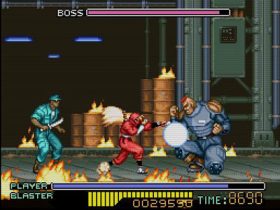 Known as just Ninja Warriors in the US, this was a remake of the Ninja Warriors arcade game. That game had an unusual setup featuring multiple screens. This is kind of like what Konami did with the 6-player version of X-Men Arcade. Aside from that little detail, the remake is much better than that game.
Known as just Ninja Warriors in the US, this was a remake of the Ninja Warriors arcade game. That game had an unusual setup featuring multiple screens. This is kind of like what Konami did with the 6-player version of X-Men Arcade. Aside from that little detail, the remake is much better than that game.
You can choose between three cyborg characters who play much more differently than a lot of other three character beat ‘em ups. What’s interesting about this game is that you can only move from left to right unlike most beat ‘em ups (similar to games like Bad Dudes or Two Crude Dudes). This makes keeping yourself from being surrounded a bit more challenging.
Ninja Warriors Again is a rather unconventional beat ‘em up. You have no extra lives. Fortunately, you’re given a much longer health bar than most beat ‘em ups since you are a cyborg. You also have to ability to block melee attacks and even bullets as you will run into guys with guns frequently. It’s nice to play a beat ‘em up where your enemies are not the only ones who can block attacks. You also have a power bar that automatically recharges over time. This allows you to perform a powerful attack in one direction, which uses a portion of the bar.
You can also perform a powerful attack hitting everyone onscreen by fully emptying your power bar, no health required. This encourages you to not rush ahead whenever you finish a batch of enemies when you can wait for your power bar to fill up. Lastly, in addition to your standard jump you can perform a higher jump from a block stance in order to avoid getting surrounded. The game also features some rather interesting moves like a special jump attack that Kunoichi can use to repeatedly bounce back and forth between enemies.
The graphics are very good and feature rather large character sprites and a good soundtrack that is similar to the excellent music featured in Natsume’s other game Wild Guns.
Shop for Ninja Warriors Again on eBay
Shin Nekketsu Kouha Kunio-kun – Kunio Tachi No Banka
Super Famicom
Almanic Corp (1994) This is a very strong entry in the series that gave us River City Ransom. The story follows the events of Renegade and features many returning characters from that game. The graphics here are interesting. The characters are more realistically proportioned than other games in the series.
This is a very strong entry in the series that gave us River City Ransom. The story follows the events of Renegade and features many returning characters from that game. The graphics here are interesting. The characters are more realistically proportioned than other games in the series.
The game features a system where you’ll play with a party of characters and can switch between each of them. The combat is similar to Double Dragon and other games in the Kunio-kun series.
One cool bonus though is that you can actually ride your motorcycle in parts of the game! This is fun with two players as one of you controls the bike while the other attacks enemies. The game features a very strong soundtrack. Some consider this the best game in the Kunio-kun series.
Shop for Shin Nekketsu Kouha Kunio-kun on eBay
Mighty Final Fight
NES
Capcom (1993) This is basically Final Fight chibi edition for you anime fans. The characters are all small and super-deformed. Obviously, you’re getting a funnier version of Final Fight here, but also of note, is the RPG element it introduces.
This is basically Final Fight chibi edition for you anime fans. The characters are all small and super-deformed. Obviously, you’re getting a funnier version of Final Fight here, but also of note, is the RPG element it introduces.
Your characters can gain levels and new moves. So, if you’ve played River City Ransom and want another NES beat ‘em up with a little RPG flair, try this little obscure entry in the Final Fight series.
Shop for Mighty Final Fight on eBay
Shop for Mighty Final Fight on Amazon.com
Teenage Mutant Ninja Turtles: The Hyperstone Heist
Genesis / SNES
Konami (1992) This one tends to get overshadowed by the excellent Turtles in Time available on the Super Nintendo. That game was an enhanced port of the popular arcade game that retained much of what people loved about that game. Hyperstone Heist uses certain elements from the arcade game, but in many ways is a completely different game and doesn’t feature graphics and music quite as impressive as the Super Nintendo port of Turtles in Time. It’s still a very good game.
This one tends to get overshadowed by the excellent Turtles in Time available on the Super Nintendo. That game was an enhanced port of the popular arcade game that retained much of what people loved about that game. Hyperstone Heist uses certain elements from the arcade game, but in many ways is a completely different game and doesn’t feature graphics and music quite as impressive as the Super Nintendo port of Turtles in Time. It’s still a very good game.
The graphics and music are certainly not bad for a Genesis game at all and they retain the same style as Turtles in Time. The gameplay is also very similar and is a bit more challenging than the SNES version of Turtles in Time.
You’ll find some great elements that are unique to this game. It has its own unique areas and parts of the game seem inspired by levels and bosses from the TMNT games on the NES. So it’s worth checking out even if you’ve played both the arcade and Super Nintendo versions of Turtles in Time just to experience something a little different. Taking into account the little things that are exclusive to this game, it’s just as good a game overall as Turtles in Time and is certainly better than the Turtles in Time remake (known as Turtles in Time Re-Shelled) that’s on XBLA/PSN.
Shop for Teenage Mutant Ninja Turtles: The Hyperstone Heist on eBay
Shop for Teenage Mutant Ninja Turtles: The Hyperstone Heist on Amazon.com
Rushing Beat series
Super Famicom
Jaleco (1992-1993) This is one of those series that suffered a lot from localization, which was a common problem back in those days. A lot of things were changed as the series went overseas, including giving them stupid new names like Rival Turf and Brawl Brothers. So if you want to try them, you really need to play the Japanese versions. You definitely don’t want to see the abysmal American box art for the games either.
This is one of those series that suffered a lot from localization, which was a common problem back in those days. A lot of things were changed as the series went overseas, including giving them stupid new names like Rival Turf and Brawl Brothers. So if you want to try them, you really need to play the Japanese versions. You definitely don’t want to see the abysmal American box art for the games either.
There are some interesting elements to these games like the angry mode. Basically, a character near death could become super powerful and invincible. One of the games even featured a funny low blow attack that was removed due to the horrid localization.
The first entry in the series may not impress some people, but it got pretty good with its second installment. The third and final game (called The Peace Keepers outside of Japan) had branching level paths, hidden characters (there’s a total of six playable characters), a secret transformation for one character that seems very Dragonball Z inspired, taunts, double jumps, a four player versus mode, multiple endings and different dialog based on the character you used(the game had a lot of story to it).
Shop for Rushing Beat series on eBay
Knights of the Round
Arcade / Super Nintendo
Capcom (1994)
 This is a nice take on the old King Arthur legend. Your characters are legendary figures like Lancelot, Perceval, and Arthur himself. Characters here can level up, which actually changes their appearance.
This is a nice take on the old King Arthur legend. Your characters are legendary figures like Lancelot, Perceval, and Arthur himself. Characters here can level up, which actually changes their appearance.
You have the ability to block attacks, but it’s tricky to do in the arcade version. This was made easier in the excellent Super Nintendo port. (This is definitely a must have for any Super Nintendo beat ‘em up library.) You can see Capcom laying the groundwork for their Dungeons & Dragons games in this title and King of Dragons.
Shop for Knights of the Round on eBay
Shop for Knights of the Round on Amazon.com
Venom and Spider-Man: Maximum Carnage
Sega Genesis / Super Nintendo
Software Creations (1994) This game was pretty faithful to the original comic book story. You play as Spider-Man or Venom. The gameplay has some rather noteworthy features. You can actually summon other heroes to aid you in combat. Interestingly, they attack differently based on what character you’re using. You’ll also find hidden rooms that require you to scale buildings or use your web swing to give the gameplay some variety. Combat consists of some cool abilities like super attacks, tying up enemies in webbing, bashing two people’s skulls together, creating a shield made of webbing, attacking from a web swing, and pulling enemies towards you with a web line. This game was released on the Sega Genesis, but the Super Nintendo version features a better soundtrack. Lucky gamers might be able to find one of the limited red SNES carts this game originally came in.
This game was pretty faithful to the original comic book story. You play as Spider-Man or Venom. The gameplay has some rather noteworthy features. You can actually summon other heroes to aid you in combat. Interestingly, they attack differently based on what character you’re using. You’ll also find hidden rooms that require you to scale buildings or use your web swing to give the gameplay some variety. Combat consists of some cool abilities like super attacks, tying up enemies in webbing, bashing two people’s skulls together, creating a shield made of webbing, attacking from a web swing, and pulling enemies towards you with a web line. This game was released on the Sega Genesis, but the Super Nintendo version features a better soundtrack. Lucky gamers might be able to find one of the limited red SNES carts this game originally came in.
Shop for Venom and Spider-Man: Maximum Carnage on eBay
Shop for Venom and Spider-Man: Maximum Carnage on Amazon.com
X-Men Mutant Apocalypse
Super Nintendo
Capcom (1994) This and X-Men 2: Clone Wars are probably the best X-Men games of the 16-bit era. Mutant Apocalypse has much more of a beat ‘em up flavor to it though, with a little bit of platforming thrown in.
This and X-Men 2: Clone Wars are probably the best X-Men games of the 16-bit era. Mutant Apocalypse has much more of a beat ‘em up flavor to it though, with a little bit of platforming thrown in.
The game lets you play as five of the X-Men, each with unique moves and special attacks that are performed in similar fashion to the special moves in Street Fighter II. Each has their own pool of lives that players need to keep track of. Losing all of them will put that particular X-Man out of action.
The game also allows you to choose what order to play levels in. At first, you have to use whichever X-Man the game chooses for you. These levels are meant to give you a feel for the characters. Later in the game, you gain the ability to pick whichever character you want for the game’s remaining stages. This allows every player to play the game differently as each stage will play differently based on a character’s strengths and weakness.
The graphics are great with wonderful colors and big sprites. The X-Men and the villains they face are easily recognizable to comic book fans. The soundtrack is excellent. The songs playing in Psylocke, Cyclops and Wolverine’s first levels are especially memorable. Each track fits the character and the stage as well with Cyclops and Wolverine’s being energetic, adrenaline pumping action music and Psylocke’s being a more subdued, ninja sounding track for a stage that appropriately takes place at night. Overall, it’s a very solid X-Men game
Shop for X-Men Mutant Apocalypse on eBay
Shop for X-Men Mutant Apocalypse on Amazon.com
Captain America and the Avengers
Arcade / Sega Genesis / Super Nintendo
Data East (1991) This game lets you play as Captain America, Iron Man, Vision, and Hawkeye. Other Avengers will also pop in to help you out in various ways like dropping a health item or attacking your enemies.
This game lets you play as Captain America, Iron Man, Vision, and Hawkeye. Other Avengers will also pop in to help you out in various ways like dropping a health item or attacking your enemies.
The combat is mostly standard fare, but you do have long range attacks (like Cap’s shield). You have all of the powers the characters are known for at your disposal, and they don’t cost health to use. One fun element of combat includes being able to walk around carrying an enemy.
There are also levels where you get to fly around and shoot enemies, including a memorable encounter with a robot that looks like a Sentinel. Another nice feature is being able to go over your max health when you collect a health item. One of the strangest things about this arcade game is that it actually had a pause button!
The graphics are a bit odd in that the characters are rather small for a beat ‘em up, but you’ll still recognize all your favorite Marvel characters. The game is actually full of cameos from the Marvel universe as they all show up to help you out as mentioned earlier. One nice touch is the on-screen facial, portraits that react to whatever is happening. Another nice touch is that the cutscenes are all presented as comic book panels. The game’s audio stands out for its memorably cheesy dialog. There’s a lot of voice work throughout the game. This game was ported to some consoles, but the Genesis one is the one to get. The SNES version was poorly ported by another developer.
Shop for Captain America and the Avengers on eBay
Shop for Captain America and the Avengers on Amazon.com
Cyborg Justice
Sega Genesis/Megadrive
Novatrade (1993) Now here’s a game that feels like a sibling to Capcom’s Armored Warriors. You play as a cyborg and face other robotic enemies throughout the game.
Now here’s a game that feels like a sibling to Capcom’s Armored Warriors. You play as a cyborg and face other robotic enemies throughout the game.
You’ll be given a chance to actually put your cyborg together at the beginning of the game and choose what parts you want to use. As you go through the game, you will find yourself ripping parts off of your enemies and attaching them to yourself to aid you. This is similar to how you attach parts of defeated enemies to yourself in Capcom’s Armored Warriors, another game built around robot on robot violence.
The parts you attach to your cyborg will give you useful abilities like a high jump, or handy new attacks. It’s fun dismantling your opponents. You can rip off an arm and throw it back at them. You can also remove limbs with the saw arm, which looks brutal. There are also fun beat ‘em up moves like body slams or jumping on your opponent and pummeling him.
Shop for Cyborg Justice on eBay
Shop for Cyborg Justice on Amazon.com
Mazin Saga: Mutant Fighter
Sega Genesis/Megadrive
Almanic Corporation – (1993) This game is based on a Japanese manga. You play as a neat looking, armored, blue knight who fights off monsters throughout the game. There’s a cool, spinning, jump attack you have at your disposal and you can also knock enemies into pits.
This game is based on a Japanese manga. You play as a neat looking, armored, blue knight who fights off monsters throughout the game. There’s a cool, spinning, jump attack you have at your disposal and you can also knock enemies into pits.
What’s really impressive is the larger enemies who will attack or chase you in the game leading to some epic moments. It’s pretty amazing to be just strolling through the first stage and suddenly see a gigantic foot come out of the sky and repeatedly try and squish you like an ant.
When you finally get to the end of the stage, you’ll see the head of this freakish thing starting at you over the top of a building as he tries to grab you with his enormous hands. After avoiding his attacks, you’ll morph into a giant-sized version of yourself and face this creature in one on one combat.
It certainly feels very Japanese and might remind you of those old Power Rangers shows or the giant-sized battles in Voltron. Due to your larger size, you become a bit slower. It’s interesting how much the gameplay shifts. At this point, Mazin Saga becomes a fighting game. It seems fitting, given how beat ‘em ups and fighting games are like siblings and share certain gameplay elements. This game is a real marriage of the two genres. It’s really cool when the bosses try to kill you while you’re normal sized. One stage has you running from one of these gigantic enemies. Seeing its head and arm fill up a good chunk of the screen as you run from it is pretty memorable.
Shop for Mazin Saga: Mutant Fighter on eBay
Shop for Mazin Saga: Mutant Fighter on Amazon.com
Batman Returns
Super Nintendo
Konami (1993) There’s always been this silly myth that Batman games were always bad before Rocksteady put out Batman Arkham Asylum. Educated gamers know that there have actually been a few great Batman games before that during the 8-bit and 16-bit era. This is one of them. If features gorgeous graphics with large sprites and captures the look of the movie very well. The music is excellent, as mentioned in the beat’em ups 101 article. It really sounds like the great score from the movie. This feels like a big budget game.
There’s always been this silly myth that Batman games were always bad before Rocksteady put out Batman Arkham Asylum. Educated gamers know that there have actually been a few great Batman games before that during the 8-bit and 16-bit era. This is one of them. If features gorgeous graphics with large sprites and captures the look of the movie very well. The music is excellent, as mentioned in the beat’em ups 101 article. It really sounds like the great score from the movie. This feels like a big budget game.
The gameplay is interesting because this game gives us a rather brutal version of Batman. He can grab two guys and bash their heads together, throw people into objects in the background, or slam some sap right into a motorcycle riding clown. There are some levels that break away from the beat’em up formula. One is a driving level with impressive mode 7 effects. Other stages require you to make use of the grappling hook. This usually takes place in sections of the game where you must fight your enemies with only batarangs and are placed in a limited playing field where you can only move from left to right and not up and down.
Konami treated the Batman license with respect back then. They also made the amazing game The Adventures of Batman and Robin. Not to be confused with the Clockwork Tortoise developed Sega Genesis version (which was an excellent run and gun game), this featured some beat ‘em up gameplay as well as some action oriented platform gaming. That particular game is probably the truest representation of Batman: the Animated series you’ll ever see in a video game.
Shop for Batman Returns on eBay
Shop for Batman Returns on Amazon.com
Nekettsu Oyako (Hot Blooded Family)
Playstation/Saturn
Technosoft – (1994, 1995)
This is a fairly standard beat ‘em up that doesn’t really reinvent the wheel. However, it was an early Playstation title before being ported to the Saturn in 1995.
As a PS1 title, it actually kind of stands out as you couldn’t really find a lot of 2D beat’em ups on the Playstation. Meanwhile, the Saturn had high quality stuff like Guardian Heroes, Three Dirty Dwarves, and Dungeons & Dragons collection, not to mention great 3D beat ‘em ups like Dynamite Deka.
It’s a solid enough game despite not being remarkable in any way. The game does have some nice quirks to it though. There is something entertaining about seeing the female character use a pogo stick attack against her enemies.
The game also features a weird level where you end up inside a whale, right after fighting a boss while a helicopter tries to fire at you from the background. You’ll face off against weird, squid enemies in this stage. You eventually end up fighting on top of this whale! Another cool feature is that you can pick up Playstations within the game for points, or Saturn consoles in that version of the game! Overall, it’s a decent title. Not amazing by any stretch, but enjoyable enough if you’re a fan of the genre.
Shop for Nekettsu Oyako (Hot Blooded Family) on eBay
Mighty Morphin Power Rangers
Super Nintendo
Natsume (1994)
 Laugh all you want, it’s actually not a bad game. It’s got some decent combat (the characters all have different weapons and you can even pull off super attacks), a little bit of platforming (and a swimming level) and you get to use your Megazord in the last two levels for something closer to Street Fighter II inspired gameplay. The game doesn’t look too bad and the controls are good. The music isn’t too offensive either. There are a few cool touches like being able to raise your health over the maximum, wall jumps, climbing on ceilings, being able to smash up cars (because we all know good guys like to destroy other people’s property), and special attacks in the Megazord fights. Plus, the characters have little differences to them (the pink ranger can actually shoot arrows).
Laugh all you want, it’s actually not a bad game. It’s got some decent combat (the characters all have different weapons and you can even pull off super attacks), a little bit of platforming (and a swimming level) and you get to use your Megazord in the last two levels for something closer to Street Fighter II inspired gameplay. The game doesn’t look too bad and the controls are good. The music isn’t too offensive either. There are a few cool touches like being able to raise your health over the maximum, wall jumps, climbing on ceilings, being able to smash up cars (because we all know good guys like to destroy other people’s property), and special attacks in the Megazord fights. Plus, the characters have little differences to them (the pink ranger can actually shoot arrows).
On the negative side, there’s no co-op and where the heck is the Green Ranger? He was the coolest one. It’s actually a pretty solid game that’s worth looking into if you remember being a fan of the show when you were younger. This particular license was actually handled well on the SNES. Another game, known as Mighty Morphin Power Rangers: The Fighting Edition, is featured in our hidden gems article for 2D fighters. Both of these games were made by Natsume, a complany responsible for some other great SNES games like Ninja Warriors Again and Wild Guns. The music and sound effects actually sound a bit similar to those games.
Shop for Mighty Morphin Power Rangers on eBay
Shop for Mighty Morphin Power Ranger on Amazon.com
The King of Dragons
Arcade / Super Nintendo/Playstation 2/Xbox
Capcom (1994, 2006) Some people like to think of the popular Magic Sword as a sword and sorcery, beat ‘em up/hack and slash game. It doesn’t really play like one though, but this game does. Think of it as another precursor to the great Dungeons & Dragons games Capcom would put out later.
Some people like to think of the popular Magic Sword as a sword and sorcery, beat ‘em up/hack and slash game. It doesn’t really play like one though, but this game does. Think of it as another precursor to the great Dungeons & Dragons games Capcom would put out later.
You play as a wizard, an elf, a cleric, a fighter, and a dwarf. You can level up as you play through the game, which gives you more health. There are spells for you to use and you can block attacks as well.
It’s rather simple compared to other Capcom beat ‘em ups, but it’s still fun to play. The game has some particularly impressive boss fights (you face a memorable, large, red dragon as a final boss) and a very good soundtrack.
The Super Nintendo version replicates the game’s great soundtrack easily and is a wonderful port overall.. The King of Dragons is also part of Capcom’s Classic Collections Vol. 2 on the PS2 and Xbox.
Shop for The King of Dragons on eBay
Shop for The King of Dragons on Amazon.com
Shop for Capcom’s Classic Collections Vol. 2 on eBay
Shop for Capcom’s Classic Collections Vol. 2 on Amazon
Pu-Li-Ru-La
Arcade / FM Towns Marty / Playstation / Saturn / Playstation 2
Taito (1991, 1994, 1997, 2005) The first thing you’ll notice about this game is its gorgeous, cutesy, pastel, Japanese look. The next thing you’ll quickly realize is that this is quite simply one of the most bizarre beat ‘em ups ever made. It’s not an exaggeration to say that you have to question the mental state the developers were in when they made this game. There are some bizarre sights to see in this game like a woman moving in the wind on a flagpole. The woman in question is an actual, real person. It’s not a sprite from within the game. There are actually a couple moments in the game where you see real people onscreen in contrast to the cartoony look of the rest of the game. It’s like playing a Konami game like Teenage Mutant Ninja Turtles with the digitized actors from Mortal Kombat spliced in. Weird.
The first thing you’ll notice about this game is its gorgeous, cutesy, pastel, Japanese look. The next thing you’ll quickly realize is that this is quite simply one of the most bizarre beat ‘em ups ever made. It’s not an exaggeration to say that you have to question the mental state the developers were in when they made this game. There are some bizarre sights to see in this game like a woman moving in the wind on a flagpole. The woman in question is an actual, real person. It’s not a sprite from within the game. There are actually a couple moments in the game where you see real people onscreen in contrast to the cartoony look of the rest of the game. It’s like playing a Konami game like Teenage Mutant Ninja Turtles with the digitized actors from Mortal Kombat spliced in. Weird.
There are a ton of other bizarre things to see in the game like fish with legs, a room full of eyes staring at you, frowning sunflowers, and other strange things. There’s even a rather odd moment in the Japanese version of the game where you’ll see a door that is set between a giant pair of seemingly female legs. Not hard to see why this was removed from the international version of the game. This part of the game is particularly surprising given how cutesy many other things in the game are like the little animals your enemies turn into or the two innocent looking kids you play as. It’s amazing how the game can go from cute to rather suggestive without skipping a beat. When you open the door a pink elephant comes out and you see black space and a picture of the planet earth within. This game is like one big, acid trip. It is easily the most bizarre game in this entire article. Even the playable characters are rather odd. You play as two innocent looking kids with magic sticks. How many beat ‘em ups can you say that about?
The weirdness alone make this game worth checking out. Even when it’s not throwing visual oddities at you, the lovely pastel color style will keep your attention. It also plays and controls well. You have a magic stick and can increase its range of attack by pushing the joystick in the proper direction and you can even attack behind you. You also have magic spells you can use, though the game chooses them randomly. They are just as bizarre as everything else in the game. One of them is a guy in a microwave who cooks your enemies! If you want a game that feels very, very Japanese and is very, very weird, this is the game for you. You really have to play it yourself to see just how odd and crazy it is.
Pu-Li-Ru-La was first ported to the FM Towns Marty in 1994. You can also find it on the Saturn and Playstation as Pu-Li-Ru-La Arcade Gears (1997), or as part of the Taito Memories (Volume 1) compilation on the Playstation 2 (2005). Interestingly, it is not available on the Taitos Legends compilation released in North America and Europe.
Shop for Pu-Li-Ru-La on eBay
Shop for Taito Memories on eBay
Shop for Taito Memories on Amazon
Marvel Super Heroes in War of the Gems
Super Nintendo
Capcom (1996)
 The same engine as X-Men Mutant Apocalypse would be used again for this game. As the title suggests, this one makes greater use of the Marvel license and lets you play as popular characters like Spider-Man, Iron Man and the Hulk. Equipping gems gives you various advantages like speed and health boosts, similar to how gems work in Capcom’s Marvel Super Heroes arcade game. Also, this game adds super attacks and air combos to the gameplay. There’s a cool level where you ride beams of light created by Dr Strange across a volcano while facing Silver Surfer in this game as well.
The same engine as X-Men Mutant Apocalypse would be used again for this game. As the title suggests, this one makes greater use of the Marvel license and lets you play as popular characters like Spider-Man, Iron Man and the Hulk. Equipping gems gives you various advantages like speed and health boosts, similar to how gems work in Capcom’s Marvel Super Heroes arcade game. Also, this game adds super attacks and air combos to the gameplay. There’s a cool level where you ride beams of light created by Dr Strange across a volcano while facing Silver Surfer in this game as well.
Shop for Marvel Super Heroes in War of the Gems on eBay
Shop for Marvel Super Heroes in War of the Gems on Amazon.com
Warriors of Fate (Tenchi o Kurai 2: Sekiheki no Tatakai)
Arcade / Playstation / Saturn / PS3
Capcom (1992) This game is based on the Three Kingdoms era of China, much like the Dynasty Warriors series or the Knights of Valour series.
This game is based on the Three Kingdoms era of China, much like the Dynasty Warriors series or the Knights of Valour series.
It’s notable for throwing large amounts of enemies at you and for giving players a large number of weapons to use. A few of those weapons are even hidden. The combat system also allows for air throws and you can even ride horses.
The arcade game’s international version is a bit disappointing. It features a number of changes. The Romance of the Three Kingdoms theme was lost and a few weapons were removed. Plus, there is an ending that is missing and some missing story bits
Fortunately, there are ports on the Saturn and the Playstation that are based on the Japanese version. They were never localized for release outside that country. The game would be released again as part of Sony’s PSOne Classics in 2011.
Shop for Warriors of Fate/Tenchi o Kurau II on eBay
Dungeon Magic/Light Bringer
Arcade / PS2 / Xbox / Microsoft Windows
Taito (1994)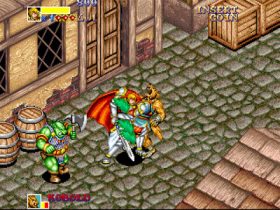 Taito had dabbled in Dungeons & Dragons, sword and sorcery stuff with games like Rastan and Cadash. This one is a bit more interesting though. It goes against the grain by having an isometric play field.
Taito had dabbled in Dungeons & Dragons, sword and sorcery stuff with games like Rastan and Cadash. This one is a bit more interesting though. It goes against the grain by having an isometric play field.
There’s a lot of cool RPG elements in this game. Your character can level up. You can find weapons with magic enhancements that only work for a certain character. You can also get ranged weapons like a crossbow, and you can use a shield to defend yourself. There’s lots of treasures to be found, which help you level up. There are magic spells you can pull off too, but they are limited unless you find more.
The game is not linear. There are different ways to exit areas. You even need to move objects around and jump on them to get to certain areas and there are hidden areas to find as well. The nonlinear nature of the game and the different things each character says as you go through the game give it some replay value. This game is likely to appeal to fans of Capcom’s Dungeons & Dragons: Shadow over Mystara or Konami’s Gaiopolis.
In addition to the arcade version, the game can be found on Taitos Legends 2.
Shop for Taito Legends 2 on eBay
Shop for Taito Legends 2 on Amazon
Warrior Blade: Rastan Saga Episode III
Arcade / PS2
Taito – (1991 / 2007)
In some ways, this seems like a rather generic, Golden Axe clone. The combat is not particularly special and the bosses are pushovers. However, the game has some memorable moments and interesting quirks that make it worth checking out.
The game features some cool, action sequences throughout the game. One section has you sliding down a mountainside while hacking and slashing away at enemies. That’s just plain epic right there. Another cool moment takes place when you start a stage on horseback and find yourself doing battle with other enemies who are on horses as well. The sound of hooves on the ground and the whinnying of the horses really help make for one of the coolest examples of horse mounted combat in a 2D game.
Lastly, there is an awesome stage called Wind Canyon. Here’s you find ...
JLO Loves Her Taco Flavored Kisses

Submitted by: Unknown
Tagged: category:Image , category:voting-page , draw something , jlo , south park , taco flavored kisses Share on FacebookMy Life Just Got That Much More Awesome

Submitted by: Unknown
Tagged: eye of the tiger , kilt , stone arch bridge , survivor , tuba Share on FacebookServidora do Senado destrata cidadão que consultou seu salário

Há dez dias, publiquei aqui o post “Senado publica salário de servidor, mas quer saber onde o curioso mora“. Ali, comentei: “Parece feito sob medida para intimidar os curiosos.” Fui bondoso com o “parece”, pelo jeito.
Tribunal após tribunal reconheceu que a informação dos salários dos servidores é pública. Atendendo a contragosto à determinação, os órgãos públicos resolveram impor a barreira do cadastro e informar aos consultados. O que é um perigo.
O Contas Abertas conta hoje o caso de um servidor do Tribunal Superior Eleitoral que consultou por dados de uma servidora do Senado, ao acaso, e recebeu uma resposta malcriada.Ou seja: os dados pessoais de quem consultou os dados da servidora foram enviados para ela.
Reproduzo aqui alguns parágrafos do site:
O insultado foi Weslei Machado – também servidor público, do Tribunal Superior Eleitoral (TSE). “Assim que começaram as discussões quanto ao aumento salarial no Judiciário, resolvi comparar nossa remuneração com as remunerações dos outros poderes”, conta ele.
Após realizar, por acaso, a consulta à remuneração da servidora, Weslei recebeu a primeira mensagem às 15h21 do dia 4 de outubro: “O seu interesse pelo meu salário é mesmo público? Por questões de segurança, posso saber, por exemplo, quem, onde e quando alguém acessou meus dados, mas não o porquê. Se alguém que conheço acessa meus dados, então é bisbilhotice. Só por isso pergunto”.
O sistema de consulta de remunerações de servidores utilizado pelas Casas do Congresso Nacional exige que qualquer interessado em verificar o salário de um servidor em particular forneça informações pessoais, tais como endereço de e-mail, número do CPF e endereço residencial. Apenas após o preenchimento desse formulário é possível visualizar a informação desejada. Todos os dados pessoais são enviados ao servidor que teve a remuneração consultada.
Weslei respondeu, às 15h53, que, nos termos da Lei de Acesso à Informação, não precisaria motivar o acesso ao contracheque. “Trata-se de um direito da cidadania. Como cidadão, estou fiscalizando os valores gastos pela Casa da Fiscalização (Senado) com o seu pagamento”, escreveu.
Como réplica, às 16h45, a servidora disparou: “Venia permissa. Se eu o conhecesse, chamá-lo-ia simplesmente de fofoqueiro. Ratione legis, você é um fiscal. Ratione personae, apenas um bisbilhoteiro”. As três expressões em latim usadas pela servidora significam, respectivamente: “Com sua permissão para discordar”; “Em razão da lei”; e “Em razão da pessoa”.
Weslei considerou o e-mail “afrontoso”, já que estava exercendo um direito. “Fiquei decepcionado. Mais uma vez, confirmamos que o Senado é uma Casa que não cumpre com o princípio republicano e que seus servidores não respeitam a população”.
Esse tipo de medida vai completamente contra o espírito da lei de acesso a informações públicas, porque não protege a privacidade de quem consulta informações que o poder público é obrigado a fornecer. Na Câmara, existe o mesmo tipo de medida.
Nesse caso, houve basicamente uma desinteligência. Mas imagine, por exemplo, o que fariam nas regiões de faroeste do Brasil a quem consulta informações sobre os proprietários de fichas sujas de sangue.
No último post que escrevi a respeito, houve um debate interessante nos comentários sobre os limites da privacidade e da curiosidade. Há servidores públicos sérios preocupados com a possibilidade de riscos à sua segurança.
Pessoalmente, acredito que a divulgação dos salários dos servidores prejudica muito, mas muito, menos a segurança do servidor do que a exigência de identificação prejudica a segurança do curioso.
SERVIÇO: O Girino Vey, programador de mão cheia, colocou no ar para qualquer um consultar os dados dos salários do Senado e outros cantos da administração federal e estadual de São Paulo, por várias formas de resumo. Clique aqui e veja tudo. Ele terá lá os dados de junho a setembro daqui a pouco.
The call of Cthulhu
Submitted by: arenwolf22
Posted at: 2012-10-14 13:54:47
See full post and comment: http://9gag.com/gag/5598902
Mamãe passou açúcar em mim
Eu descobri, e me odeio por isso, que o apresentador Luciano Huck tem uma linha de camisetas que vão desde a apologia ao alcoolismo e obesidade, e também à automedicação (notem que neste há uma tarja preta onde aparece escrito “Venda sem prescrição médica”), passando pelo flagrantemente irresponsável (com tons, novamente, de alcoolismo) e chegando até o pseudoinclusivo semirracista e o limítrofe pré-estupro.
No meio de todas essas abominações texto-têxteis, há uma cujo significado nunca me foi claro – devido ao fato de ser uma declaração orgulhosa de um crueldade intrínseca; “mamãe passou açúcar nimim” (sic).
Vejam o exemplo abaixo:
Por que alguém pagaria mais de setenta reais numa camiseta está completamente além da minha compreensão, bem como fato de alguém usar dinheiro para adquirir algo tão porcamente escrito.
Mas não estou aqui para julgar. Ao invés disso, venho aqui oferecer versões mais realistas e ilustradas da campanha “sou filho de uma torturadora”. Aproveitem.
Para os mais ousados, uma cena clássica do filme nem tanto, Les Fourmis:
Para os amantes da Natureza Selvagem, uma bela cena do simbiótico relacionamento entre as espécies:
E, finalmente, para os fãs dos quadrinhos, a inesquecível cena do famoso Tenente Verde sob o lápis de Don Harley:
Compartilhem. O mundo precisa saber como sua mãe foi cruel com você.
Utopia, distopia e um papo sobre ficção científica com 6 recomendações de livros | WTF #5
Utopia? Distopia?
São dos dois conceitos mais universalmente utilizados em ficção científica. Segundo a Wikipedia:
Utopia: Tem como significado mais comum a ideia de civilização ideal, imaginária, fantástica. Pode referir-se a uma cidade ou a um mundo, sendo possível tanto no futuro, quanto no presente, porém em um paralelo. O “utopismo” consiste na ideia de idealizar não apenas um lugar, mas uma vida, um futuro, ou qualquer outro tipo de coisa, numa visão fantasiosa e normalmente contrária ao mundo real. O utopismo é um modo absurdamente otimista de ver as coisas do jeito que gostaríamos que elas fossem.
Distopia: é o pensamento, a filosofia ou o processo discursivo baseado numa ficção cujo valor representa a antítese da utopia ou promove a vivência em uma “utopia negativa”. As distopias são geralmente caracterizadas pelo totalitarismo, autoritarismo, por opressivo controle da sociedade. Nelas, caem as cortinas, e a sociedade mostra-se corruptível; as normas criadas para o bem comum mostram-se flexíveis. A tecnologia é usada como ferramenta de controle, seja do Estado, seja de instituições ou mesmo de corporações. Distopias são frequentemente criadas como avisos ou como sátiras, mostrando as atuais convenções sociais e limites extrapolados ao máximo.

Quando criança eu gostava muito de ciência, mas não me interessava a fantasia. Até para a ficção científica eu torcia o nariz. Mas isso até os dez anos de idade, quando comprei um livro de divulgação científica de Isaac Asimov, “O Colapso do Universo”.
Ele contava de forma dramática a história das estrelas de diversos tamanhos, passando por sua formação até seu derradeiro final, como gigantes vermelhas, anãs brancas, estrelas de nêutrons ou buracos-negros. Gostei tanto do livro (cheguei a apresentar um trabalho na escola sobre ele) que ansiosamente persegui inúmeros outros livros de divulgação de Asimov, até que um dia não resisti: comprei um de seus livros de ficção científica (“Poeira de Estrelas”).
Naquela época (1985), talvez seja preciso dizer, as coisas eram diferentes. Não havia internet, e eu não conhecia ninguém que tivesse interesse em literatura de ficção científica. Alguns amigos gostavam de Star Trek, e vez que outra encontrava alguém que ficava acordado e assistia a Sessão Corujão na Globo – já que VHS era meio caro e pouca gente tinha no Brasil.

Ilustração de Franco Brambilla (www.francobrambilla.com), parte de uma série que retrata alienígenas invadindo cenas típicas de décadas passadas
Daí era possível conversar sobre filmes como “A última esperança da terra” ou “No mundo de 2020”, “Planeta dos macacos”, “Logan’s run”, “Silent running”, etc. Mas de forma geral, minha experiência com Ficção Científica consistia em passar horas em sebos e ir montando um mapa de possíveis leituras com algumas referências feitas em introduções, ou recomendações de velhos donos de sebos.
Fora a mera curiosidade científica e talvez uma mente imaginativa, não parei muito para tentar entender porque eu segui o “caminho do geek”, ou seja, afinal de contas porque eu pessoalmente haveria criado essa afinidade.
Mas o certo é que, já naquela época, a Ficção Científica era anacrônica: eram livros velhos, de páginas amareladas, da “era de ouro”, isto é, os anos 50. O futurismo, as “previsões” científicas, não me interessavam tanto (e isso foi muito antes do steampunk, que realmente transformou o anacronismo num estilo).
Três fatores pareciam me fascinar nesses primeiros contatos:
- tramas de cunho lógico ou de engenho, nas quais soluções eram obtidas por uma mistura de raciocínio e conhecimento científico;
- surpresa, quebras de padrões, mundos, seres e relações sociais inusitados;
- o próprio aspecto já envelhecido, imperfeito, desqualificado ou escanteado dessas obras.
Com o passar dos anos fui construindo um conhecimento relativamente bom de uma vasta gama de autores, e outros três fatores contribuíram para que eu depurasse meu gosto e encontrasse novos interesses dentro da ficção científica:
- a chegada da Isaac Asimov Magazine no Brasil, em 1990;
- minha inscrição no “Clube de Leitores de Ficção Científica”, que produzia um ótimo zine chamado Somnium, e onde conheci luminares da ficção científica no Brasil, como o Dr. Ruby Felisbino Medeiros, dono da maior biblioteca de FC no Rio Grande do Sul, talvez do Brasil;
- e o fantástico livro de Gilberto Schröder, “Ficção Científica”, que descrevia centenas de livros e filmes e continha pequenos ensaios extremamente instigantes sobre os vários temas da FC.
Repito: numa era sem internet, onde certos livros eram inalcançáveis, e existiam apenas como lenda.

Com o passar do tempo meu interesse começou a se voltar a histórias de cunho mais filosófico, psicológico e antropológico. A ficção científica guiou a maior parte de meus interesses e perspectivas, e quando o “futuro chegou”, em algum momento dos anos 90, e se abriram os portais da cultura irrestrita com a Internet, creio que ela me ajudou a encarar as mudanças de forma diferente da maioria das pessoas ao meu redor.
Ao mesmo tempo é curioso como a ficção científica envelheceu e perdeu relevância no mundo de hoje: ela já era velha na década de oitenta, e só foi caducando mais até os dias de hoje.
É claro que há o comentarista de Facebook que posta algo no sentido de “meu deus, toda essa vida em redes sociais, isso é um horror para os relacionamentos, as pessoas vivem em bolhas!” (a inovação como pathos), e o neófilo fascinado, que vê todos os seus gadgets como extensões naturais de sua humanidade (a inovação como ethos). Eu já tendo a ver com certo olhar cansado: foram tantas leituras de robôs terríveis e espaçonaves maravilhosas, utopias e distopias, mundos ótimos que se revelam horripilantes e vice-versa, que naturalmente surgiu certo distanciamento analítico e engajamento mais criterioso nesses tipos de visões ora catastróficas, ora deslumbradas.
Mas a ficção mesmo, produzida nos últimos 10 anos especialmente, não parece ter relevância alguma. Talvez eu tenha que ler mais Cory Doctorow, ou algo assim. Mas virou muito mais cultura de nicho do que era no passado, isso sem dúvida.
Particularmente com relação a como a tecnologia afeta nossa humanidade, a ficção científica tem nos preparado desde que Mary Shelley escreveu Frankenstein. Esse é o tema central desse gênero de literatura fantástica: seja ele mais crítico e desconfiado com a tecnologia, seja ele progressista, deslumbrado e propagandista com a mesma.
É curioso que o tema nos seja tão desinteressante hoje, ao mesmo tempo que é talvez uma explicação: chega, né? A distopia e a utopia já estão aqui e agora, totalmente operantes.
Minhas 6 recomendações
Ainda assim, aproveito para fazer meia dúzia de recomendações. Alguns desses livros podem ser encontrados em português também (links para as edições na nossa língua estarão entre parênteses).

1) “The Three Stigmata of Palmer Eldrich“, Philip K. Dick
Um traficante interplanetário dotado de estigmas como os de Jesus Cristo vende uma droga que permite a trabalhadores em condições chinesas atuais vivam uma “segunda vida” amena e relativamente feliz ao brincarem com bonecos. (Em português.)
2) “The Sirens of Titan“, Kurt Vonnegut Jr.
Douglas Adams, autor da popular série Guia do Mochileiro das Galáxias, aprendeu tudo que sabia desse romance. Um milionário e seu cão penetram uma “infundíbula-crononsinclástica” e surgem como projeções de tempos em tempos, revelando aos poucos a função da história humana.
3) “Babel 17“, Samuel R. Delany
Uma língua é inventada como uma arma, ela altera o modo de pensar dos que a aprendem, transformando-os em traidores. Muitos elementos de linguística são apresentados. (Em português.)
4) “Concrete Island“, J. G. Ballard
Robinson Crusoe, mas no meio da “selva de pedra”.
5) “Schrödinger’s Cat Trilogy“, Robert Anton Wilson
Uma brincadeira com elementos de Finnegans Wake, de James Joyce, mais contracultura hippie drogada, personagens que são como “partículas-onda”, um anão que promove uma forma de terrorismo baseada em distorcer estatísticas, mudança de sexo e os Illuminati.
6) “The Dragon’s Egg“, Robert L. Forward
Um romance de ficção científica no estilo Hard (com muitos detalhes científicos corretos e precisos) mas de especulação imaginativa fantástica: uma civilização de seres inteligentes se forma não na base orgânica da vida terrestre, mas com o plasma da superfície de uma estrela. Um satélite humano estabelece comunicação, porém a civilização nasce, se desenvolve e morre em questão de dias humanos.
E, se vocês se interessarem por história da FC e quiserem ficar com vontade de ler uma pá de livros, duas aulas em áudio sobre Ficção Científica são excelentes: “TTC – Science Fiction – The Literature of Technological Imagination” e “TMS – From Infinity An Exploration of Science Fiction Literature”. Juro que tentei encontrar links onde vocês pudessem comprar tais cursos, mas não os encontrei… eles podem ser encontrados na sua forma “pirata” através do Google, mas isso é por sua conta e risco.
* * *
Na coluna “WTF”, Eduardo Pinheiro tem total liberdade para nos ajudar a ver o que precisa ser visto.
“WTF” no sentido do espanto que dá origem à filosofia, à ciência, às tradições de sabedoria. E WTF no sentido do impacto que isso talvez nos cause, quebrando cegueiras, ilusões.
Além de seguir o papo abaixo nos comentários, você pode enviar suas mais profundas perguntas para wtf@papodehomem.com.br.
Artigos Relacionados
- Broxei, por quê? | Id #2
- Depilação feminina: pelos só em cima da cabeça?
- Filho de homem mimado, mimado é
- Lance Armstrong responde: os fins justificam os meios?
- Você fez o report daquele job?
Hex Colors: The Code Side Of Color
 |
The trouble with a color’s name is that it never really is perceived as the exact same color to two different individuals — especially if they have a stake in a website’s emotional impact. Name a color, and you’re most likely to give a misleading impression. Even something like “blue” is uncertain. To be more precise, it could be “sky blue”, “ocean blue”, “jeans blue” or even “arc welder blue”.
Descriptions vary with personal taste and in context with other colors. We label them “indigo”, “jade”, “olive”, “tangerine”, “scarlet” or “cabaret”. What exactly is “electric lime”? Names and precise shades vary — unless you’re a computer.
Code Demands Precision
When computers name a color, they use a so-called hexadecimal code that most humans gloss over: 24-bit colors. That is, 16,777,216 unique combinations of exactly six characters made from ten numerals and six letters — preceded by a hash mark. Like any computer language, there’s a logical system at play. Designers who understand how hex colors work can treat them as tools rather than mysteries.
Breaking Hexadecimals Into Manageable Bytes
Pixels on back-lit screens are dark until lit by combinations of red, green, and blue. Hex numbers represent these combinations with a concise code. That code is easily broken. To make sense of #970515, we need to look at its structure:
The first character # declares that this “is a hex number.” The other six are really three sets of pairs: 0–9 and a–f. Each pair controls one primary additive color.

The higher the numbers are, the brighter each primary color is. In the example above, 97 overwhelms the red color, 05 the green color and 15 the blue color.
Each pair can only hold two characters, but #999999 is only medium gray. To reach colors brighter than 99 with only two characters, each of the hex numbers use letters to represent 10–16. A, B, C, D, E, and F after 0–9 makes an even 16, not unlike jacks, queens, kings and aces in cards.

Being mathematical, computer-friendly codes, hex numbers are strings full of patterns. For example, because 00 is a lack of primary and ff is the primary at full strength, #000000 is black (no primaries) and #ffffff is white (all primaries). We can build on these to find additive and subtractive colors. Starting with black, change each pair to ff:
-
#000000is black, the starting point. -
#ff0000stands for the brightest red. -
#00ff00stands for the brightest green. -
#0000ffstands for the brightest blue.
Subtractive colors start with white, i.e. with the help of #ffffff. To find subtractive primaries, change each pair to 00:
-
#ffffffis white, the starting point. -
#00ffffstands for the brightest cyan. -
#ff00ffstands for the brightest magenta. -
#ffff00stands for the brightest yellow.

Shortcuts In Hex
Hex numbers that use only three characters, such as #fae, imply that each ones place should match the sixteens place. Thus #fae expands to #ffaaee and #09b really means #0099bb. These shorthand codes provides brevity in code.
In most cases, one can read a hex number by ignoring every other character, because the difference between the sixteens place tells us more than the ones place. That is, it’s hard to see the difference between 41 and 42; easier to gauge is the difference between 41 and 51.

The example above has enough difference among its sixteens place to make the color easy to guess — lots of red, some blue, no green. This would provide us with a warm violet color. Tens in the second example (9, 9 and 8) are very similar. To judge this color, we need to examine the ones (7, 0, and 5). The closer a hex color’s sixteens places are, the more neutral (i.e. less saturated) it will be.
Make Hexadecimals Work For You
Understanding hex colors lets designers do more than impress co-workers and clients by saying, “Ah, good shade of burgundy there.” Hex colors let designers tweak colors on the fly to improve legibility, identify elements by color in stylesheets, and develop color schemes in ways most image editors can’t.
Keep Shades In Character
To brighten or darken a color, one’s inclination is often to adjust its brightness. This makes a color run the gamut from murky to brilliant, but loses its character on either end of the scale. For example, below a middle green becomes decidedly black when reduced to 20% brightness. Raised to 100%, the once-neutral green gains vibrancy.
A funny thing happens when we treat hex colors as if they were increments of ten. By adding one to each of the left-hand character of each pair, we raise a color’s brightness while lowering its saturation. This prevents shades of a given color from wandering too closely to pitch black or brilliant neon. Altering hex pairs retains the essence of a color.

In the example above, the top set of shades appears to gain yellow or fall to black, even though it’s technically the same green hue. By changing its hex pairs, the second set appears to keep more natural shades.
Faded Underlines
By default, browsers underline text to denote links. But thick underlines interfere with letters’ descenders. Designers can make underlines less obtrusive by scaling back hex colors. The idea is to make the tags closer to the background color, while the text itself gains contrast against the background.
- For dark text on a bright background, we make the links brighter.
- For bright text on a dark background, we make the links darker.
To make this work, every embedded link needs a <span> inside of every <a>:
a { text-decoration:underline;color:#aaaaff; }
a span { text-decoration:none;color:#0000ff; }

As you can see here, underlines in the same color as the text can interfere with parts of type that drop below the baseline. Changing the underline to resemble the background more closely makes descenders easier to read, even though most browsers place underlines above the letterforms.
Adding spans to every anchor tag can be problematic. A popular alternative is to remove underlines and add border-bottom:
a { text-decoration: none; border-bottom: 1px solid #aaaaff; }
Better Body Copy
A recurring design problem is that a specific color may be technically correct but has an unintended effect. For example, some designs call for headers and body copy to be the same color. We have to keep in mind that the thicker the strokes of large text appears, the darker the small text appears.

h1, p { color: #797979; }

h1 { color: #797979; }
p { color: #393939; }
While technically identical, the body of the copy is narrower, and more delicate letterforms make it visually brighter than the heading. Lowering the sixteens places will make the text easier to read.
How To Warm Up Or Cool Down A Background
Neutral backgrounds may be easy to read against, but “neutral” doesn’t have to mean “bland”. Adjusting the first and last byte can make a background subtly warmer or cooler.

-
#404040— neutral -
#504030— warmer -
#304050— cooler
Is that too much? For a more subtle shift, use the ones places instead:

-
#404040— neutral -
#594039— warmer -
#394059— cooler
Coordinate Colors With Copy-Paste
Recognizing the structure of a hex number’s number/letter pairs gives designers a unique tool to explore color combinations. Unlike color wheels and charts, rearranging pairs in a hex number is a simple process to change hues while keeping values similar. As a bonus, the results can be unpredictable. The simplest technique is to move one pair of characters to a different spot, which trades primary colors.
A common design technique to make text or other visual elements coordinate with a photo is to use colors from within that photo. Understanding hex colors can take that a step further, by deriving new colors that coordinate with the photo without taking directly from the photo.

Going Forward
Don’t let the code intimidate you. With a little creativity, hex colors are a tool at your disposal. If nothing else, next time someone asks if you can solve a problem with code in any language, you can simply say:
“Shouldn’t be harder than parsing hexadecimal triplets in my head.”
Further Reading
You may be interested in the following articles and related resources:
-
Color Name & Hue
Use this handy tool to find human-friendly names for any hex color. -
How to Choose the Perfect Color
Recognize that color is relational and context becomes the key to choosing the right color to compliment any photo.
(il)
© Ben Gremillion for Smashing Magazine, 2012.
The Internet is Like Ancient Egypt [Pic]
Being Ageless Gets Old
(Video Game Store | Vancouver, BC, Canada)
(A customer comes to my till with a video game. This particular game is for ages 17 and up, but the customer looks no older than 14 or 15.)
Me: “Sir, this game is rated M. Are you over 17 years of age?”
Customer: *sighs* “Alright, hang on. I’ll be back in a minute.”
(The customer leaves the store. Later, he comes back with an older woman, who I assume is his mother.)
Woman: “Honey, which game is it that you wanted?”
Customer: “This one.”
(The customer comes back to my till once more, holding the game he was trying to purchase, with the older woman in tow.)
Me: “Ma’am, just so you know, this game is rated M, so it’s normally meant for people ages 17 and up.”
Woman: “Oh, that won’t be a problem.”
Me: “Just to double-check with you, ma’am, this game’s contents can be pretty violent, so it may not be appropriate for your son.”
Woman: *chuckles* “Oh, he’s not my son.”
Me: “I apologize. But once again, it might not be appropriate for your…nephew? Little brother? Cousin?”
Woman: “He’s none of those, silly! He’s my husband!”
Me: “Whaaaaaaaa?”
(The customer then pulls out his driver’s license, which I carefully examine. According to his date of birth, he’s 33 years old.)
Me: “Okay, so you had ID. Why didn’t you just show me that?”
Customer: “Look at how short and baby-faced I am! If I showed you my ID from the beginning, you would probably think it was fake!”
Me: “Fair enough, you got me there. I mean no disrespect by this, but I did think you were about 14.”
Customer: “Yeah, looking like this is both a blessing and a curse. I even quit drinking because it’s too much of a hassle to buy beer!”
(The customer pays for his game and leaves, while his wife is tries to stifle her laughter.)
Pikachu 3DS XL coming to Europe this year
brunobeloPra Luciana.
 Europe is joining Japan in the "cool yellow Pikachu 3DS XL" club, leaving us Americans crying bitter tears on our boring red and blue systems. No date was announced during today's Nintendo Direct presentation, aside from "later this year." It's also not known whether it will be limited to certain retailers as it is in Japan.
Europe is joining Japan in the "cool yellow Pikachu 3DS XL" club, leaving us Americans crying bitter tears on our boring red and blue systems. No date was announced during today's Nintendo Direct presentation, aside from "later this year." It's also not known whether it will be limited to certain retailers as it is in Japan.Man, look at that adorable thing.
 Pikachu 3DS XL coming to Europe this year originally appeared on Joystiq on Thu, 04 Oct 2012 14:14:00 EST. Please see our terms for use of feeds.
Pikachu 3DS XL coming to Europe this year originally appeared on Joystiq on Thu, 04 Oct 2012 14:14:00 EST. Please see our terms for use of feeds.
Notch releases test footage of 0x10c

Markus "Notch" Persson has been pretty forthcoming with the development progress on his follow-up to Minecraft, the space-based adventure 0x10c. We've seen some screens and a fan-made trailer, but today we have some early prototype footage.
Yes, the above video of 0x10c is meant more as a test than your usual gameplay trailer - Notch is testing physics, bobbing and guns in this early build. Still, it's great to see he's making progress despite recent hiccups.
 Notch releases test footage of 0x10c originally appeared on Joystiq on Thu, 04 Oct 2012 21:15:00 EST. Please see our terms for use of feeds.
Notch releases test footage of 0x10c originally appeared on Joystiq on Thu, 04 Oct 2012 21:15:00 EST. Please see our terms for use of feeds.



